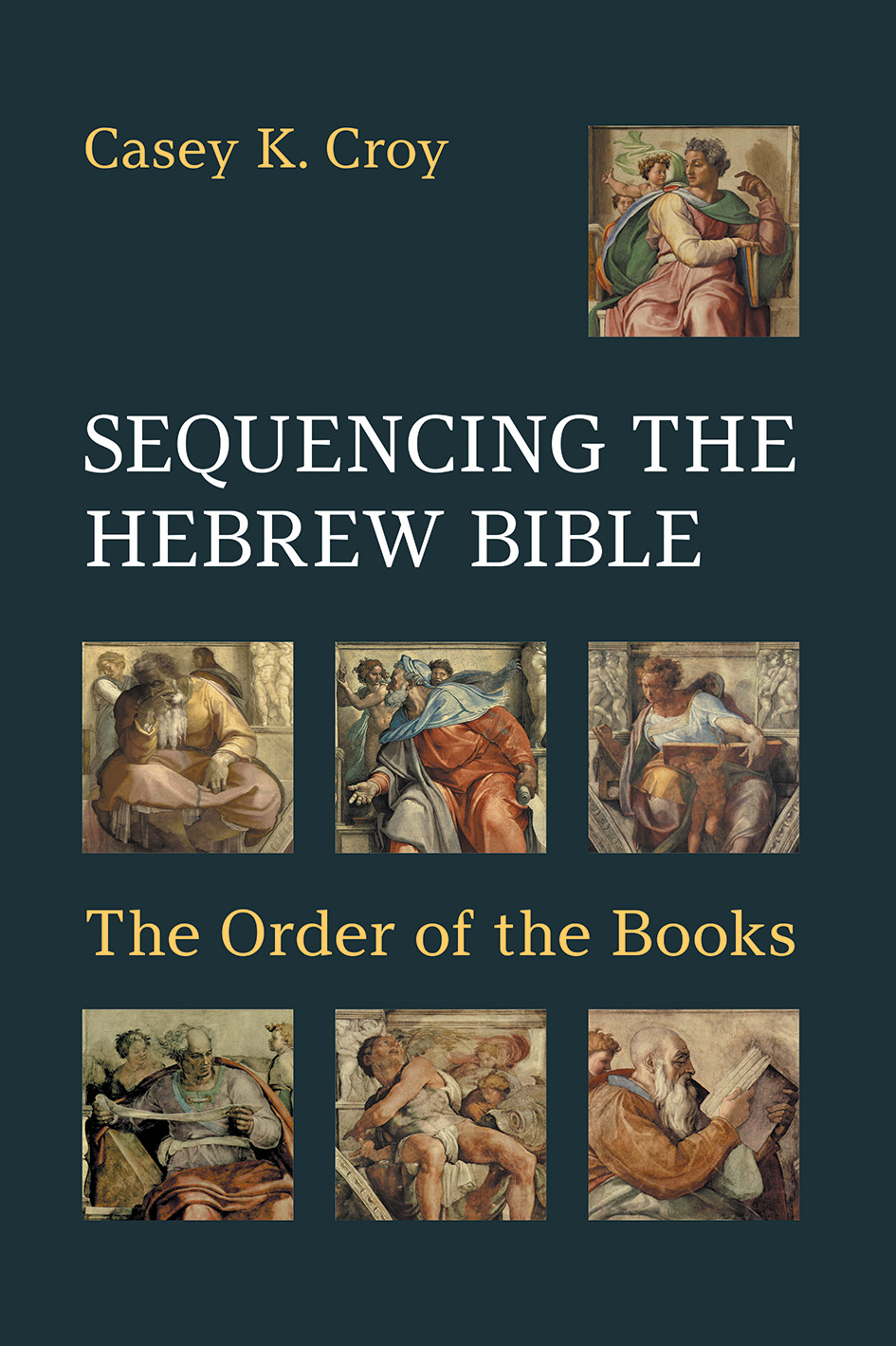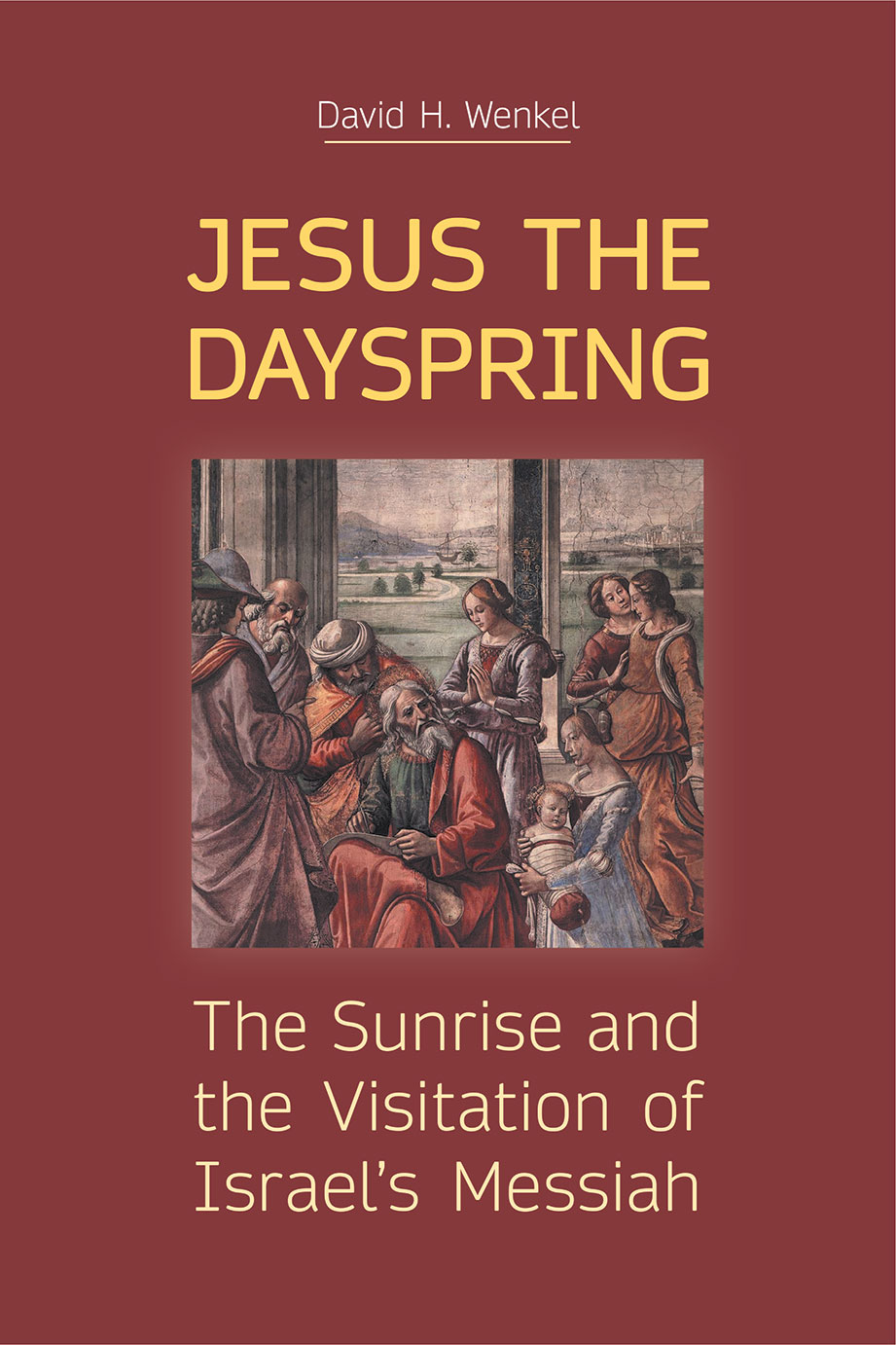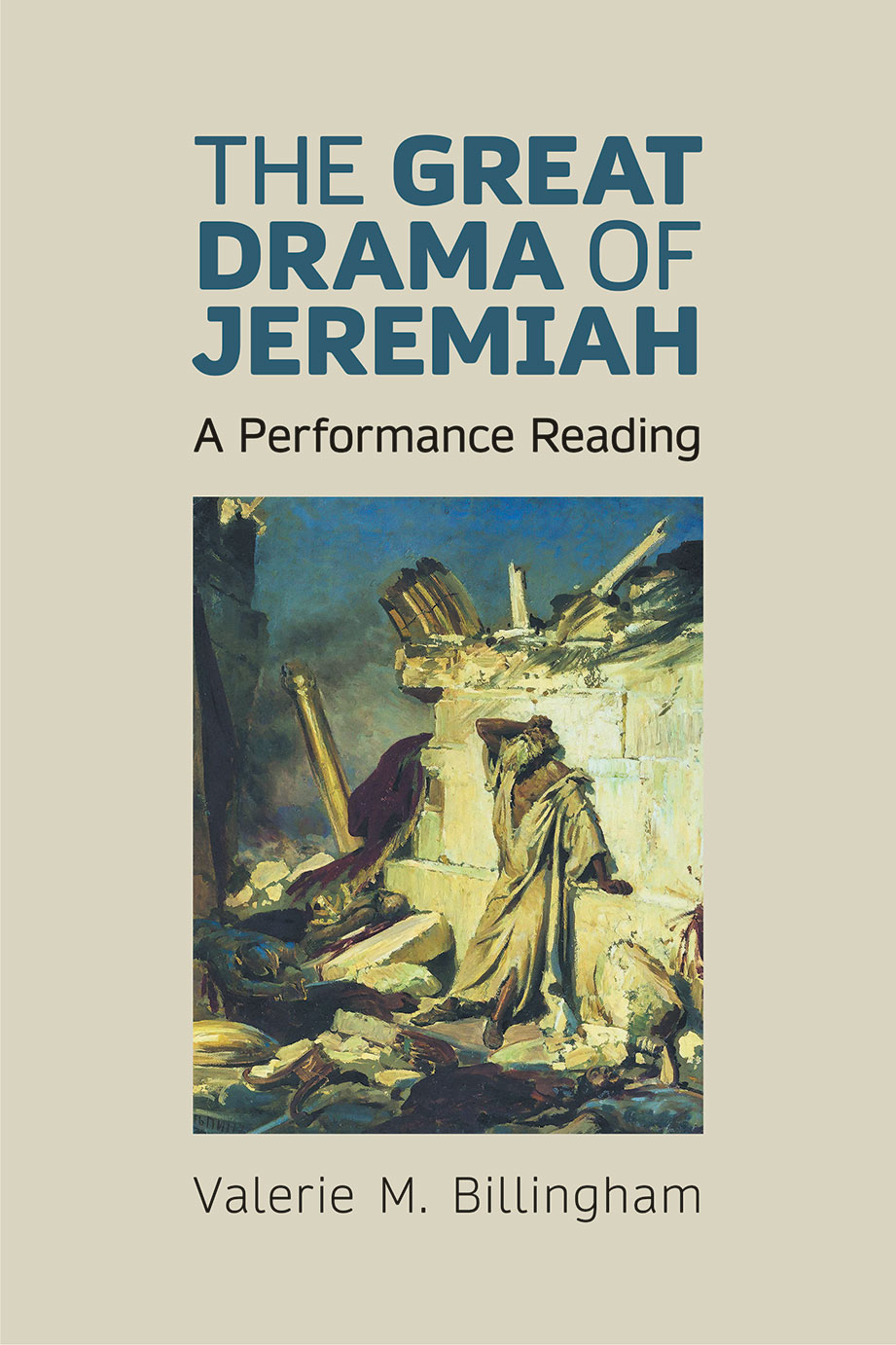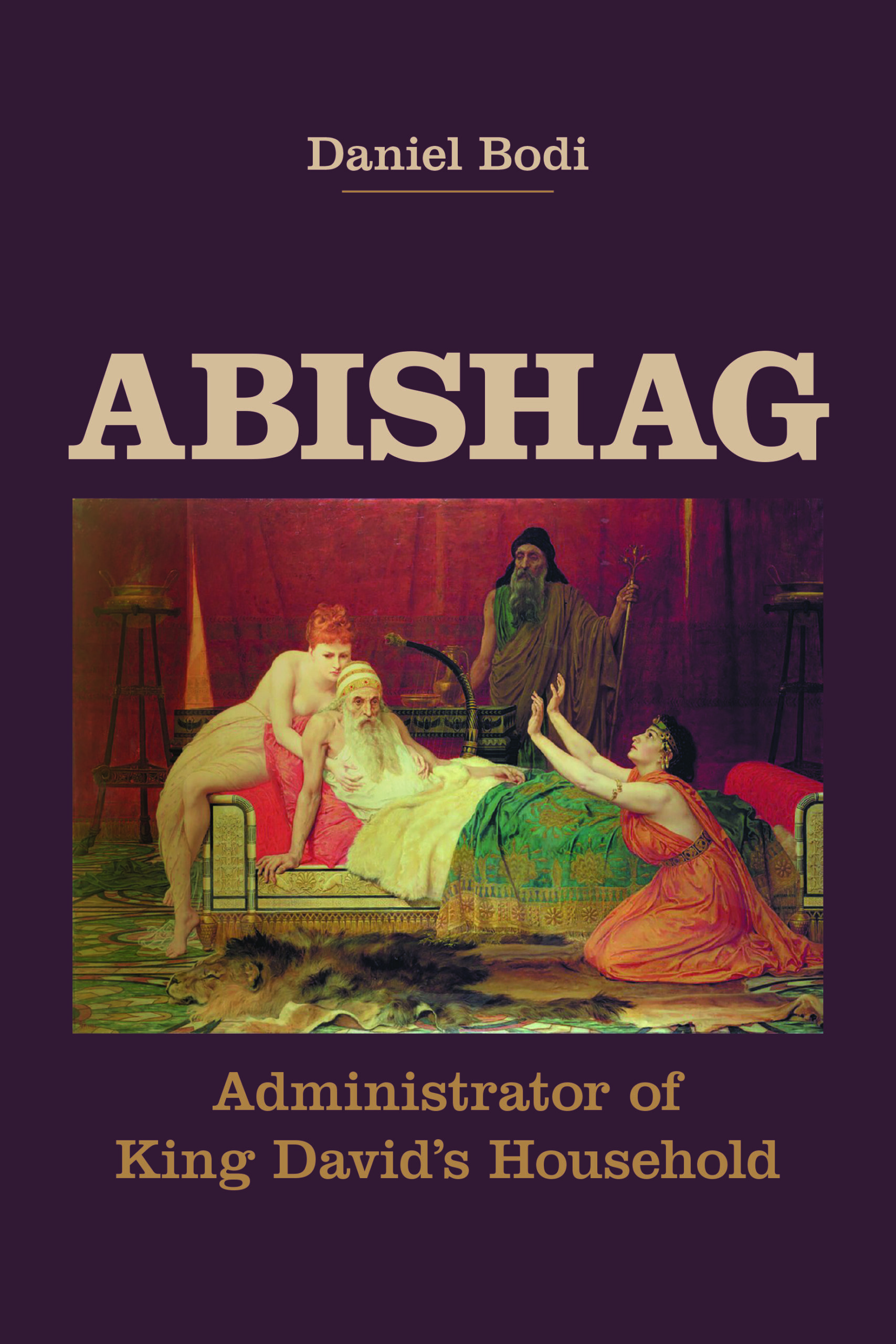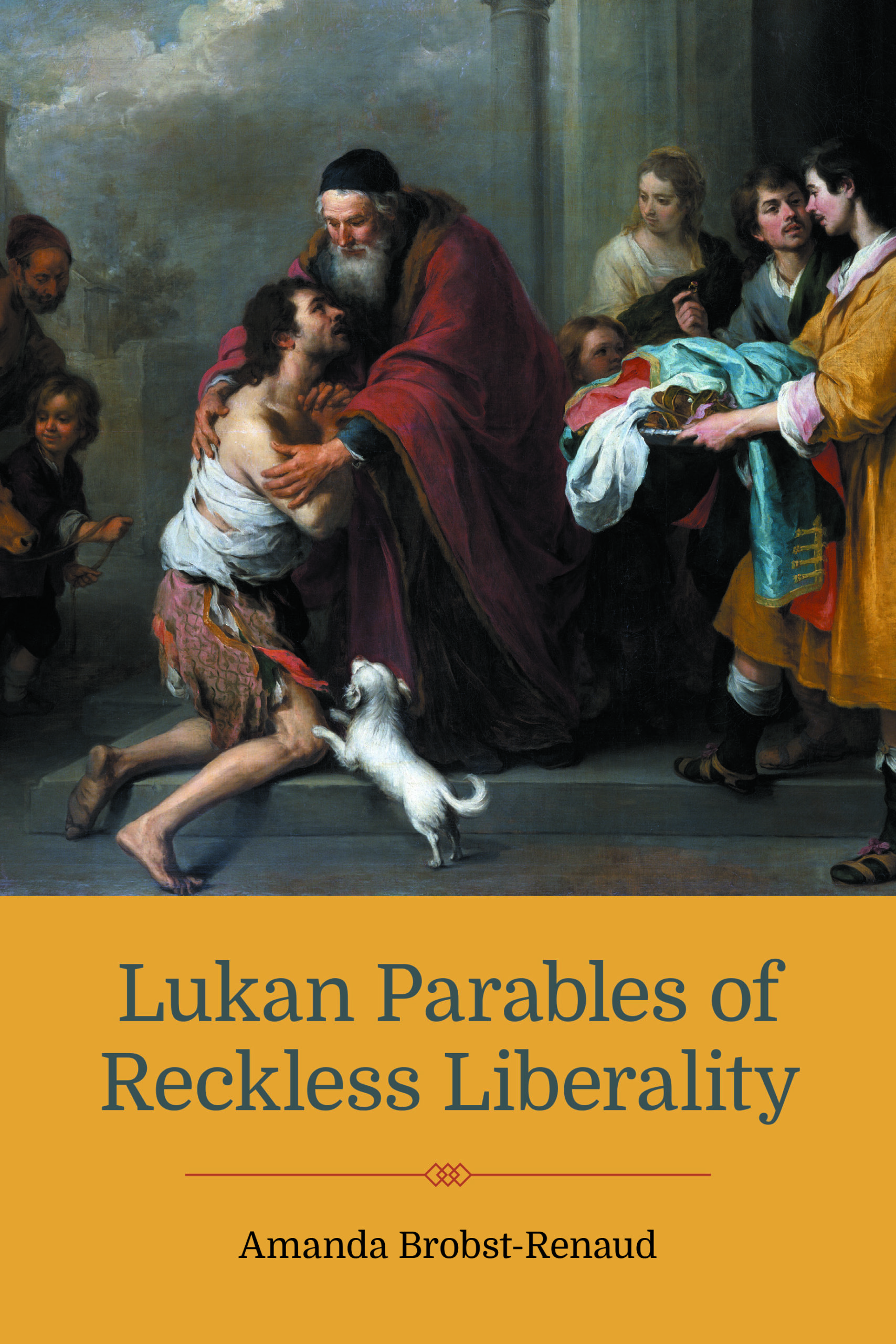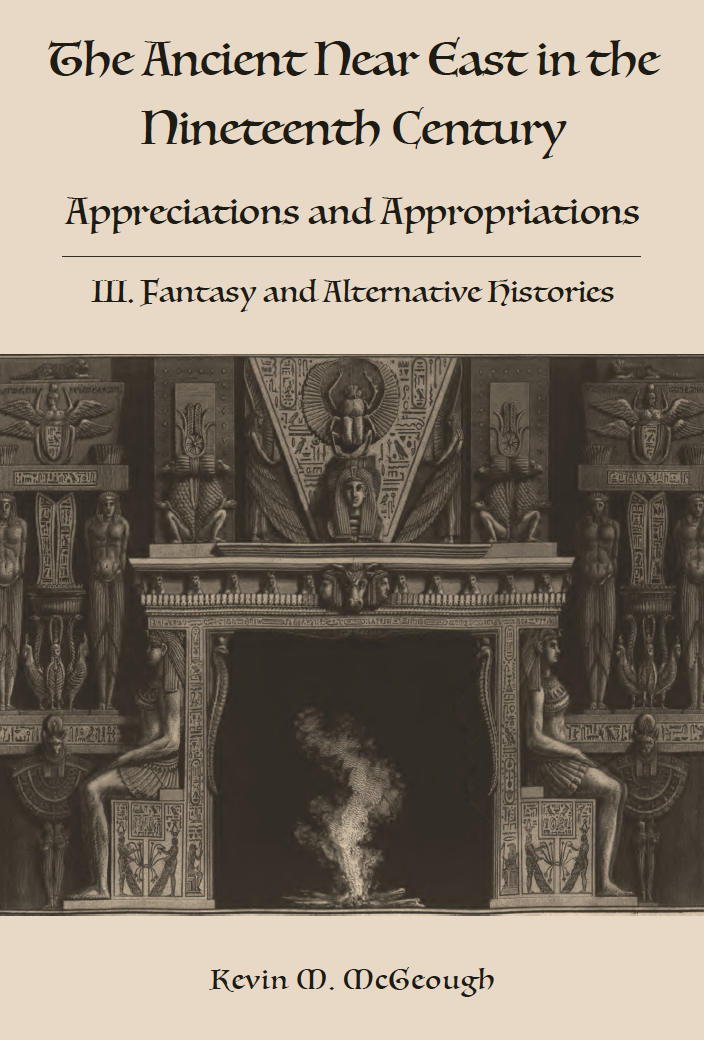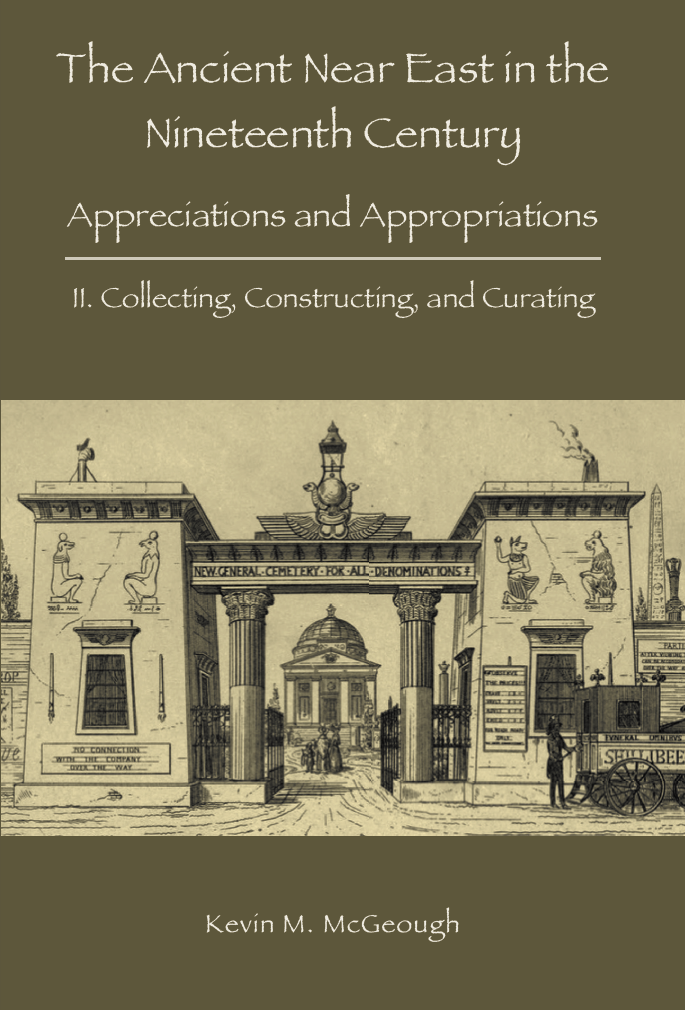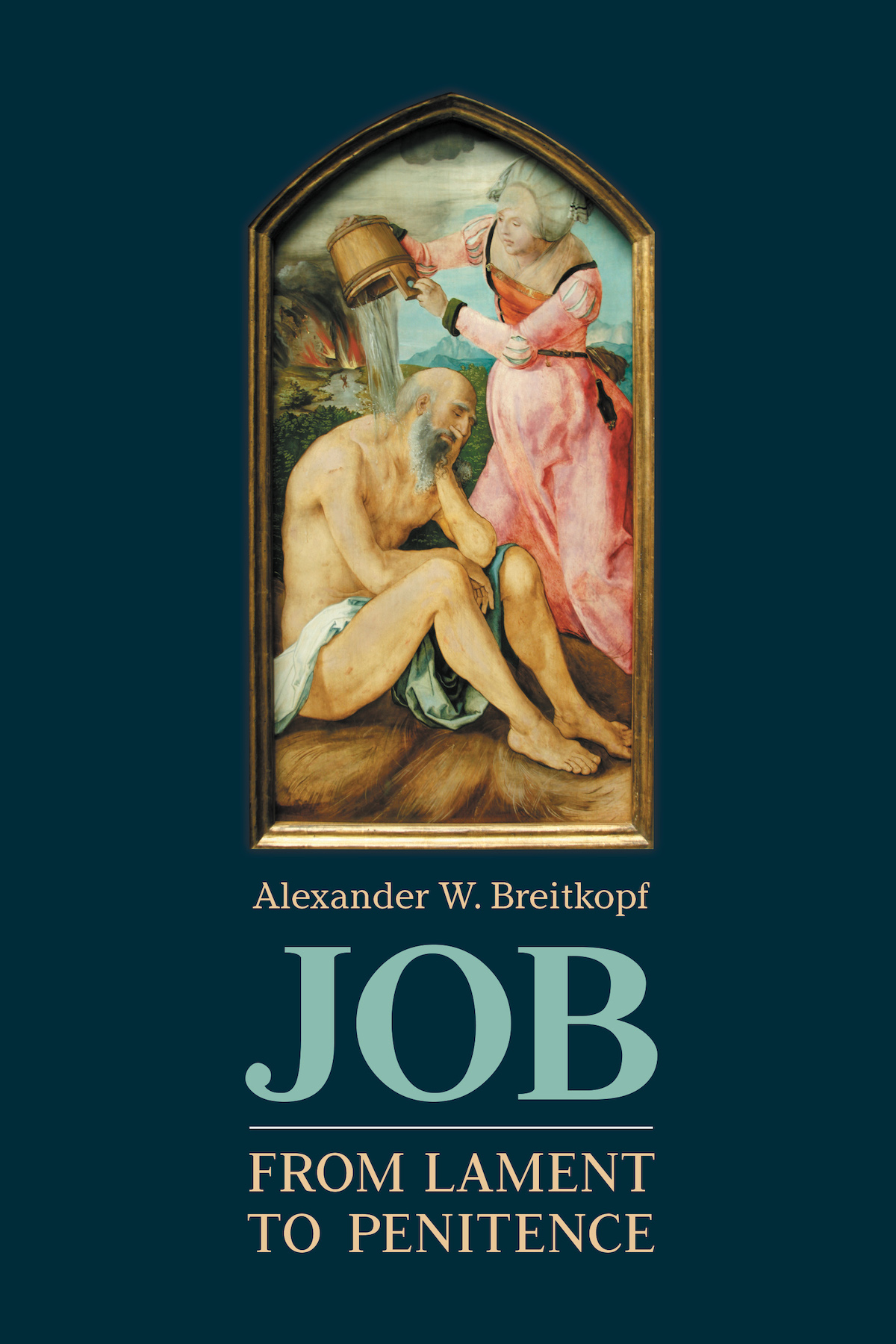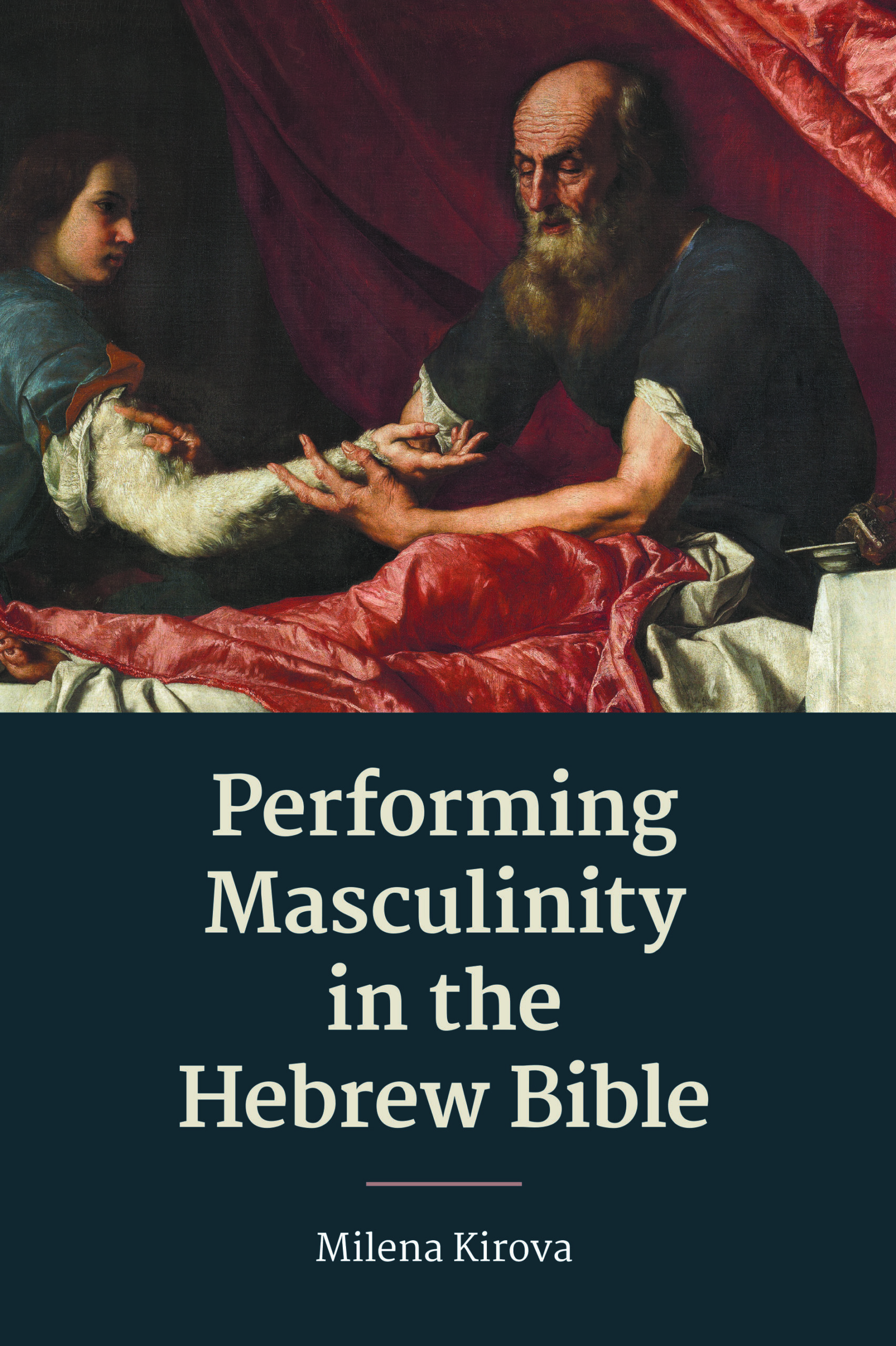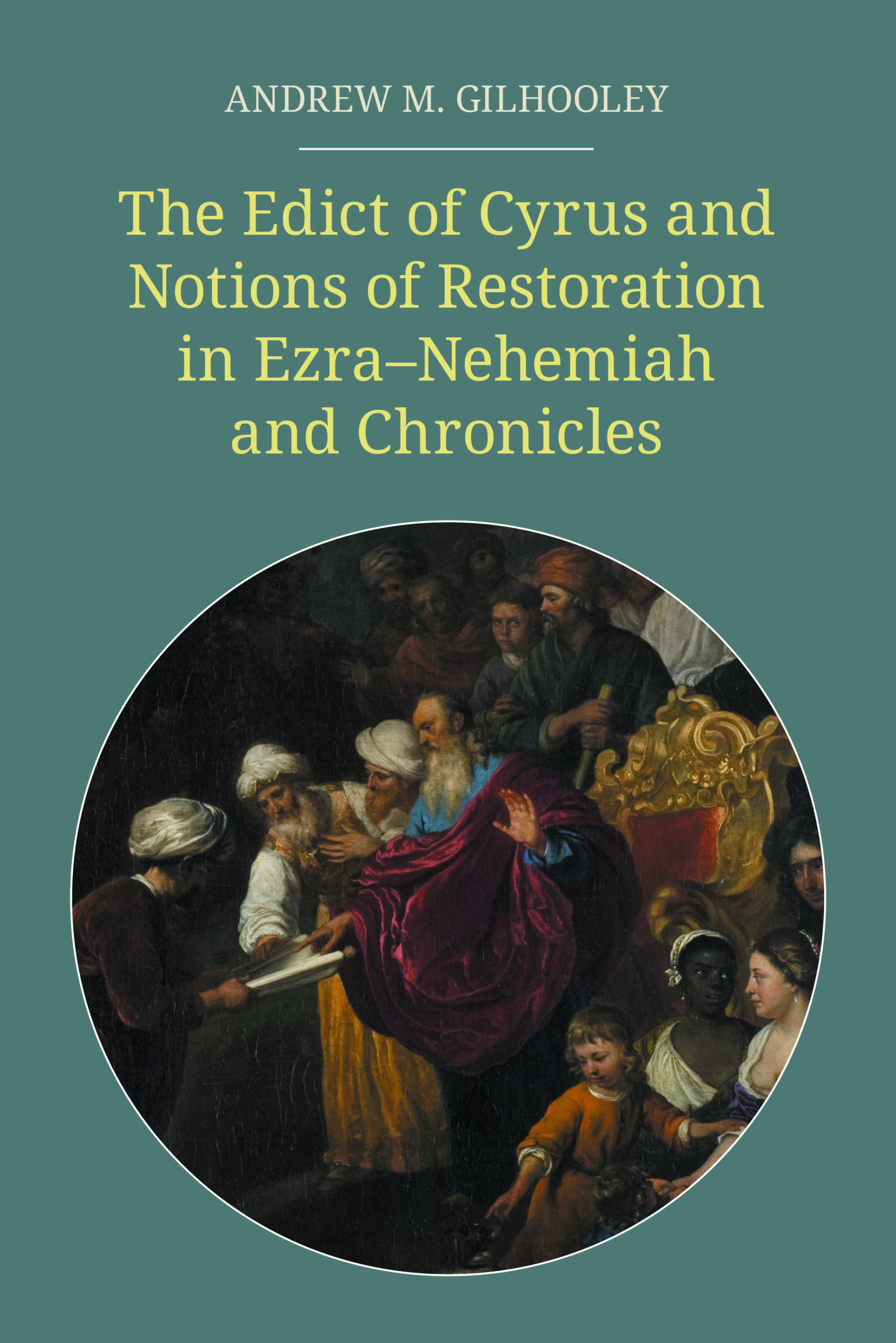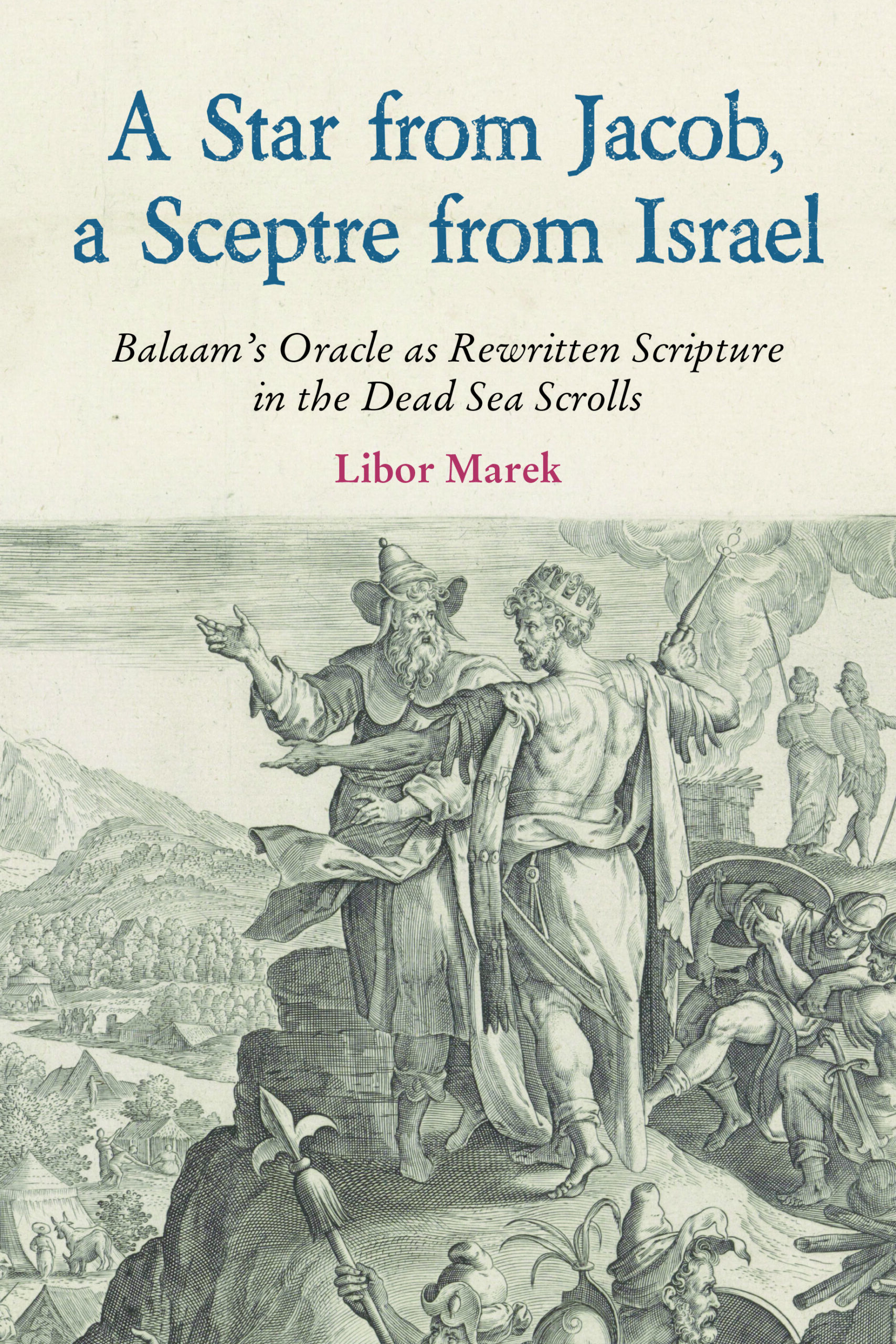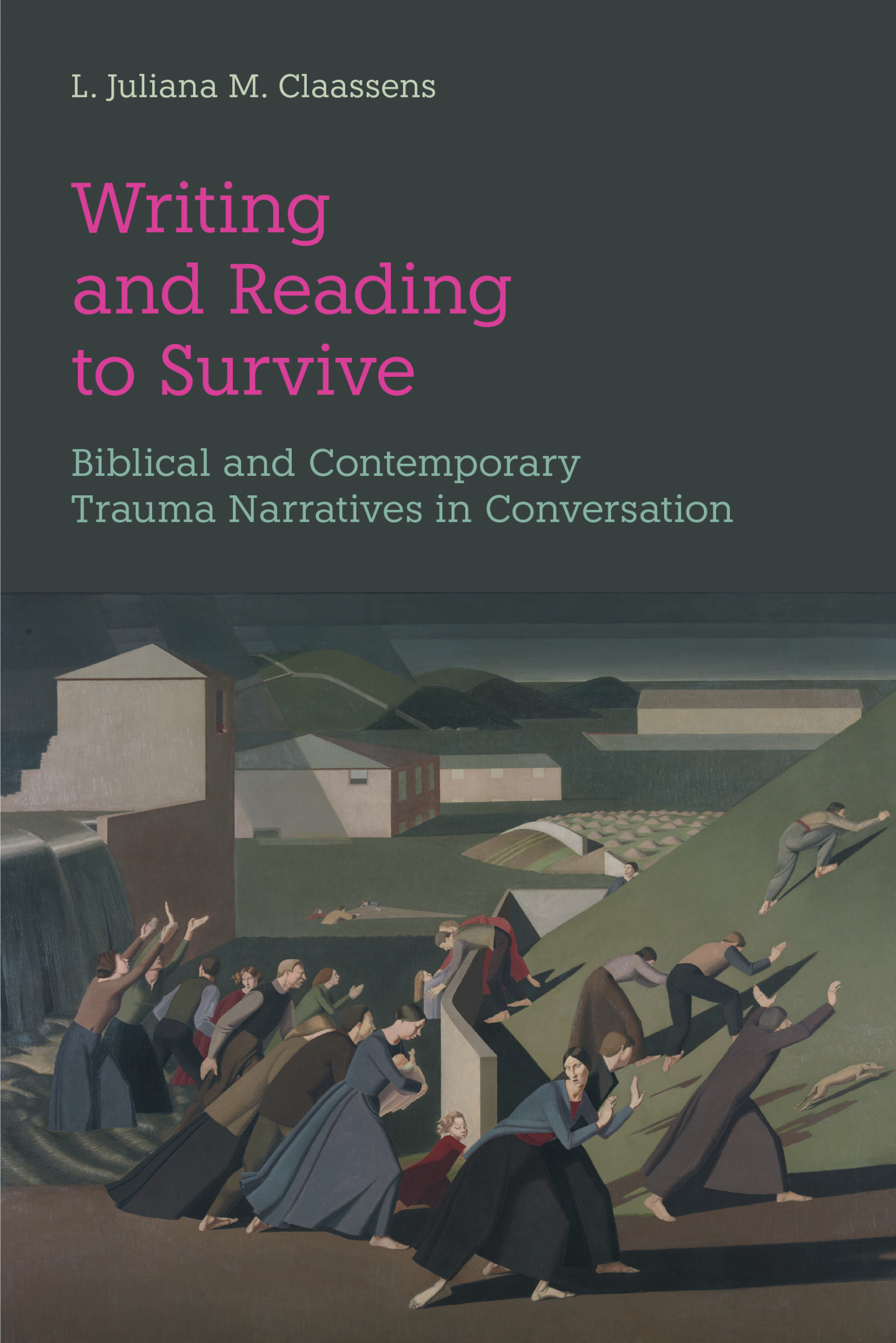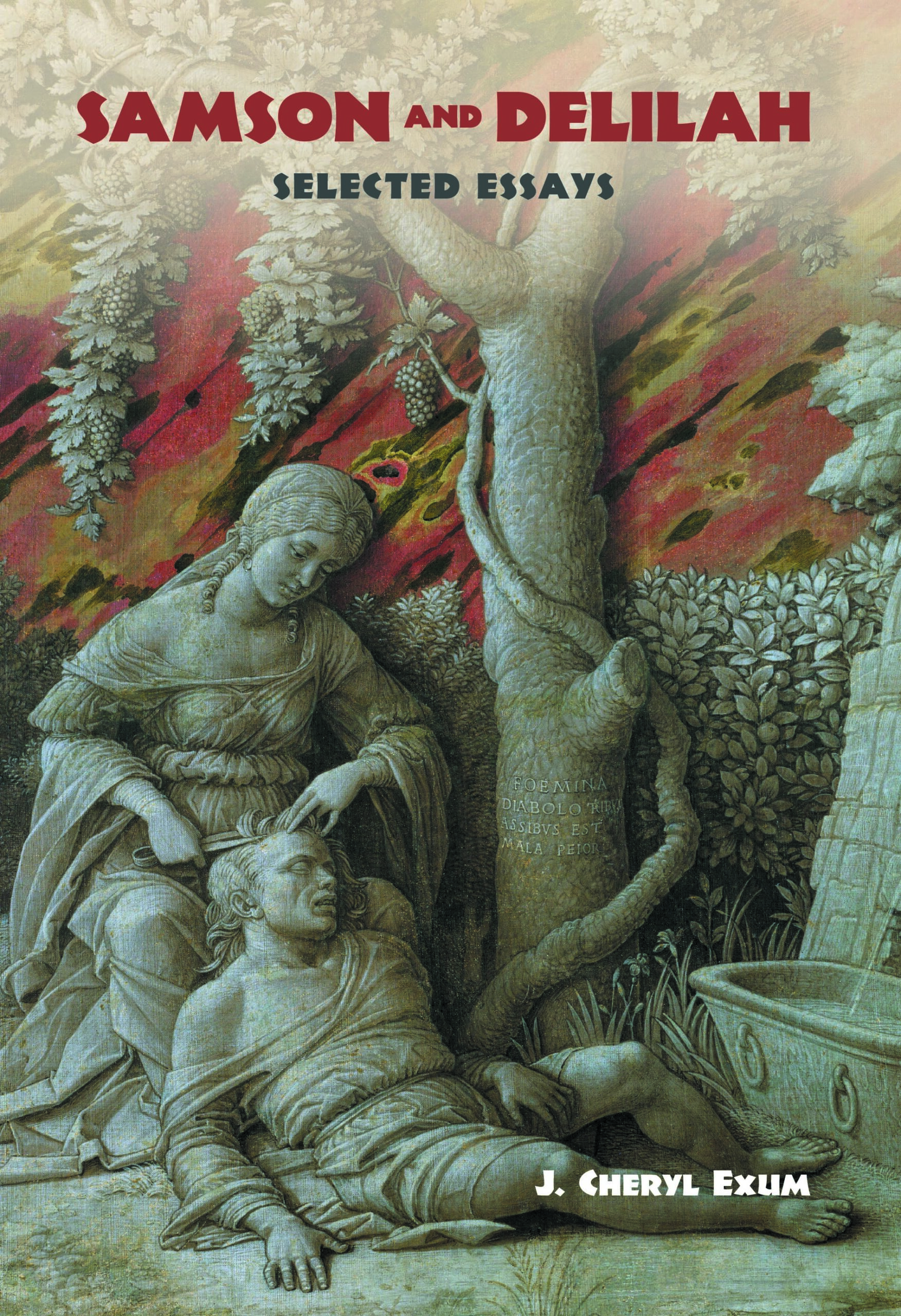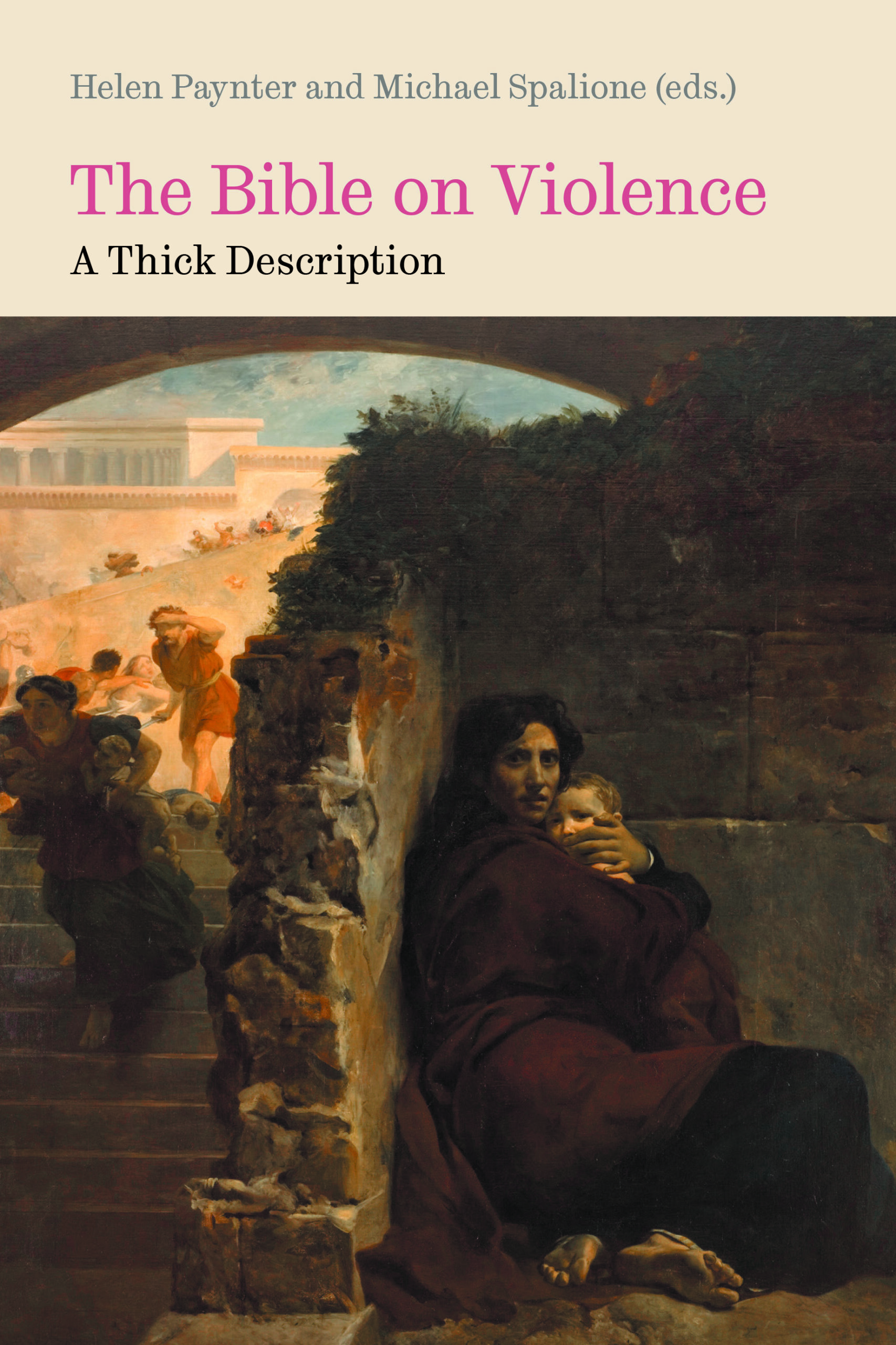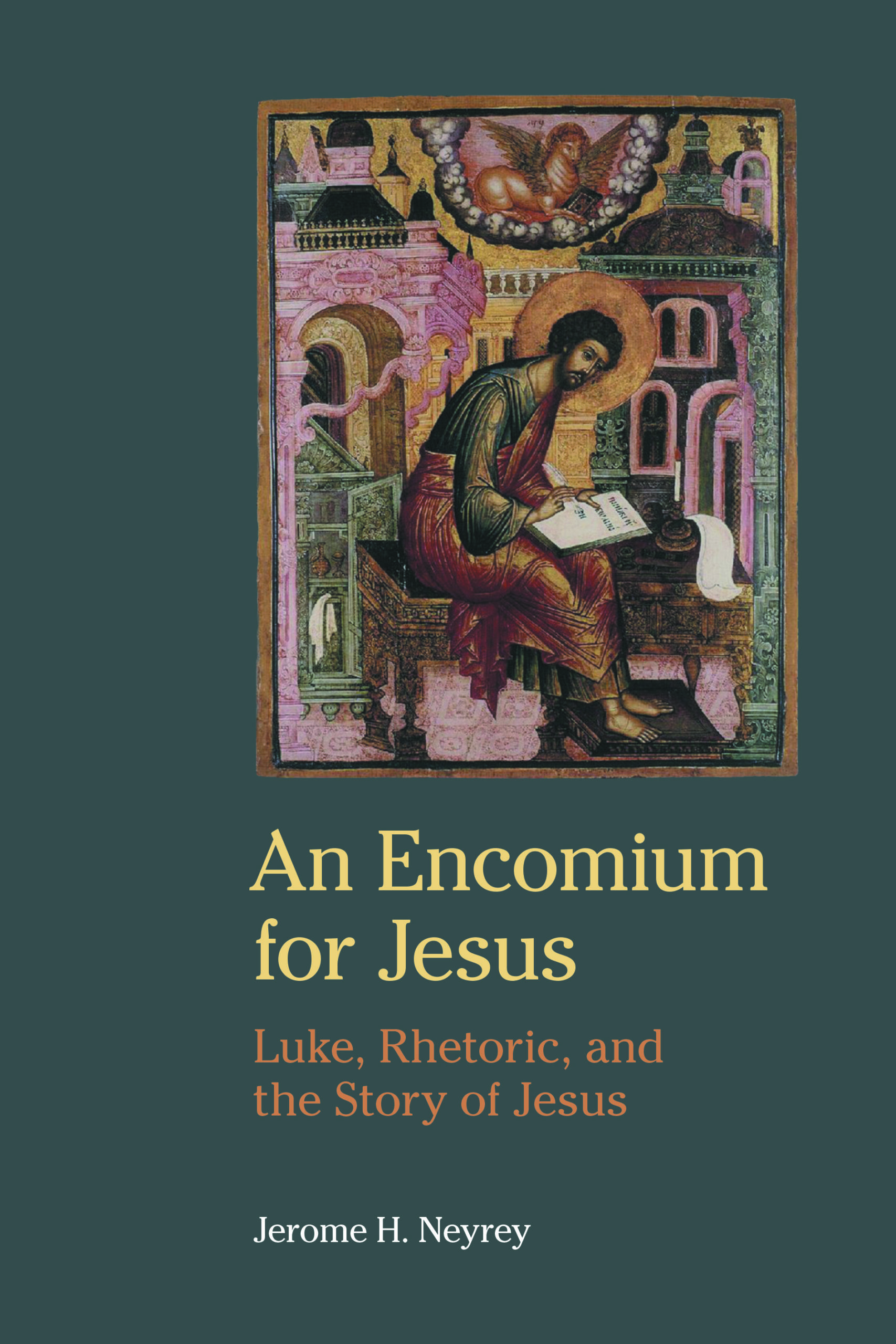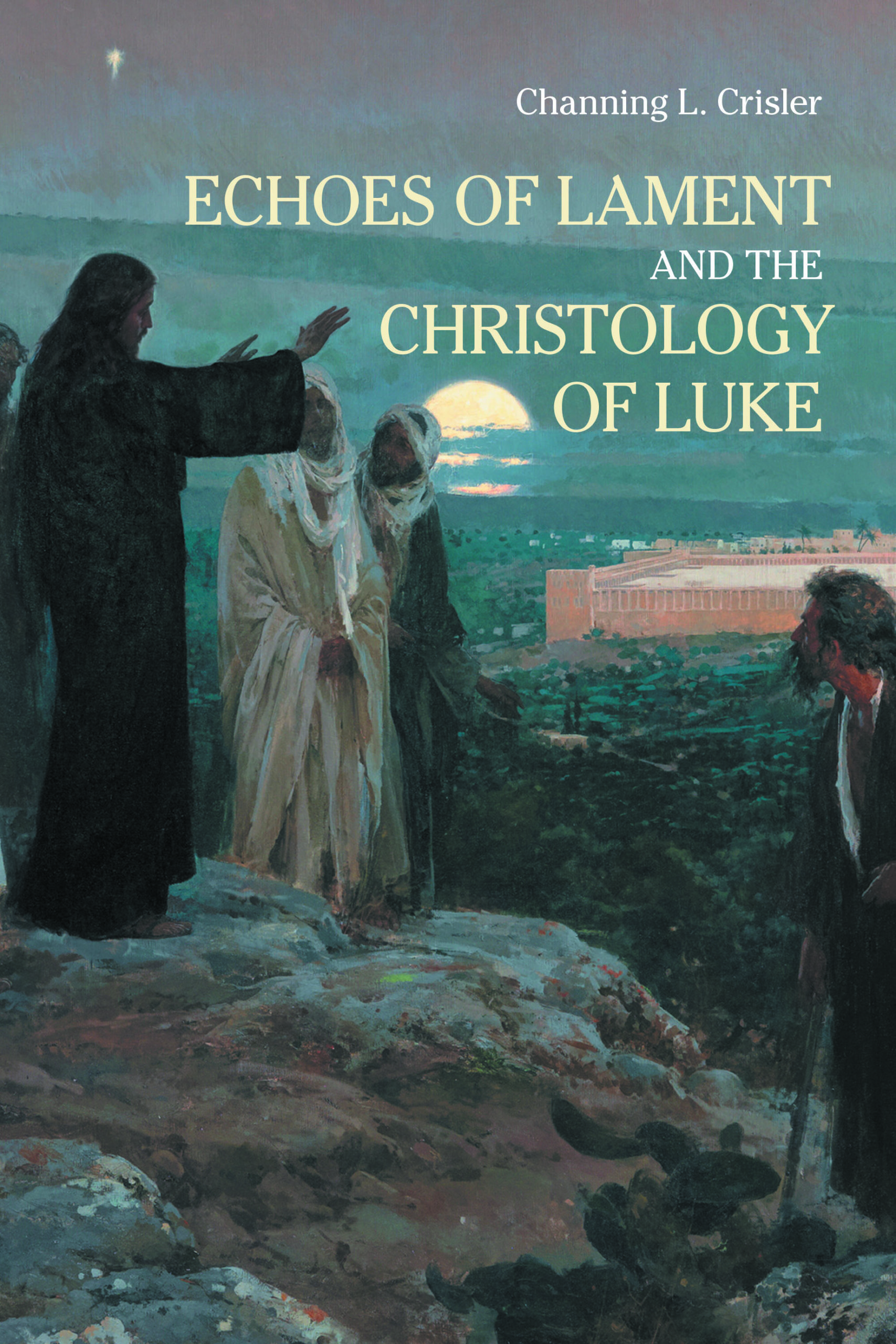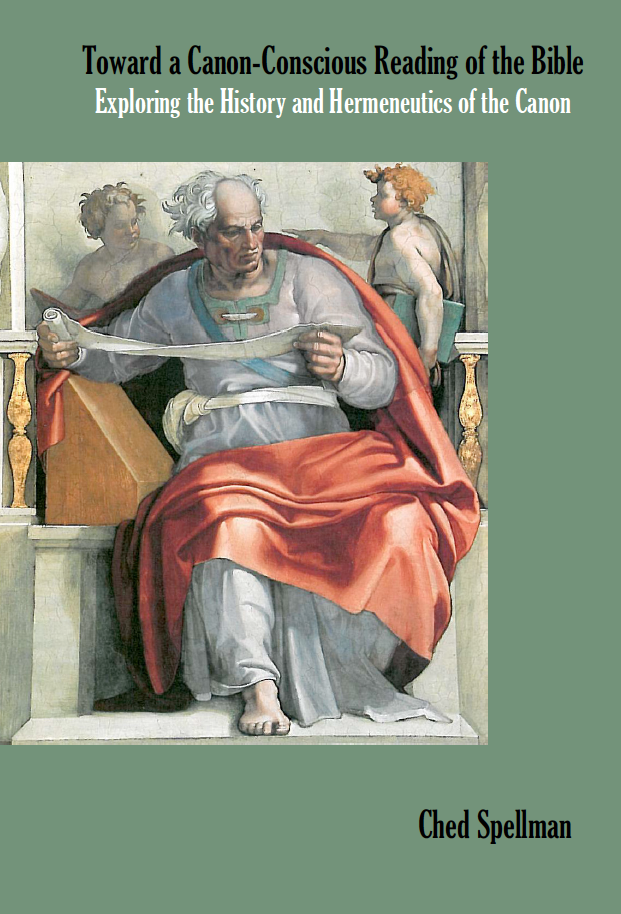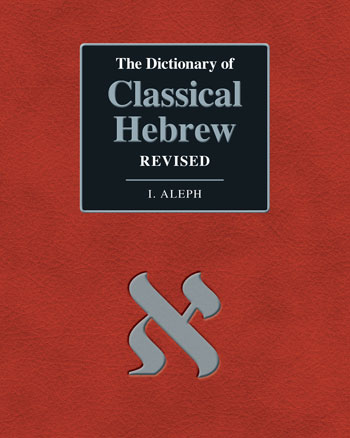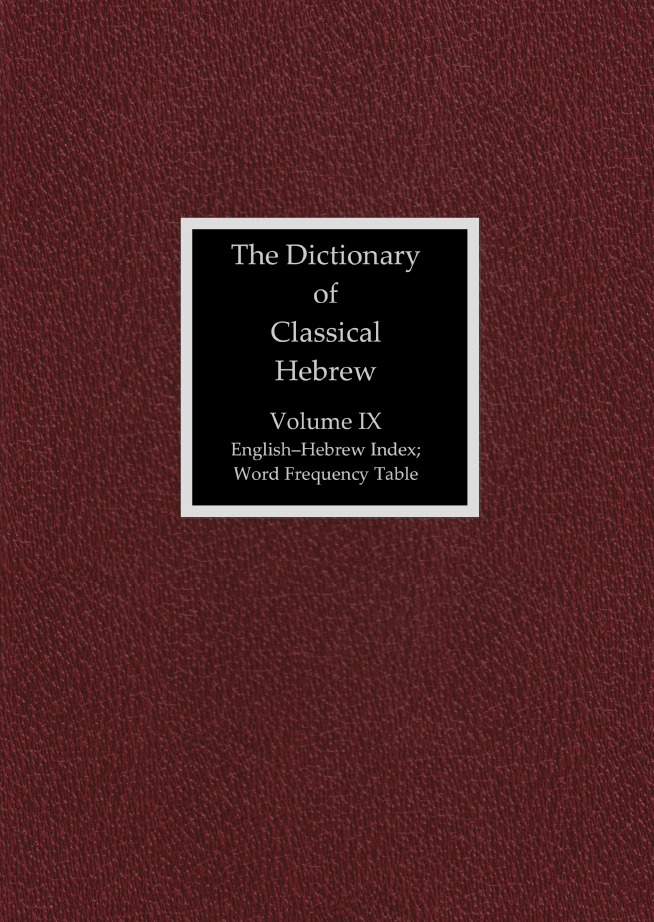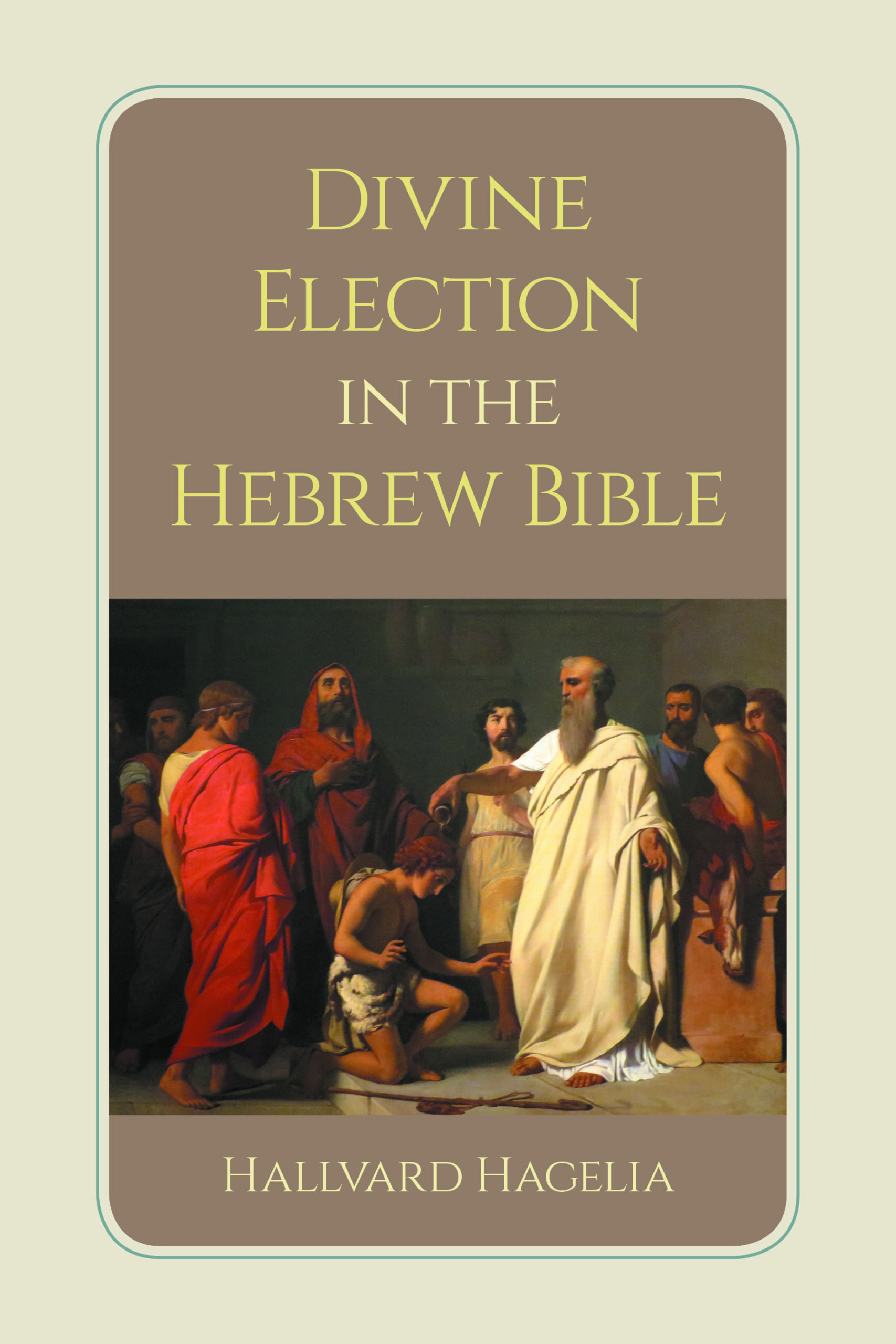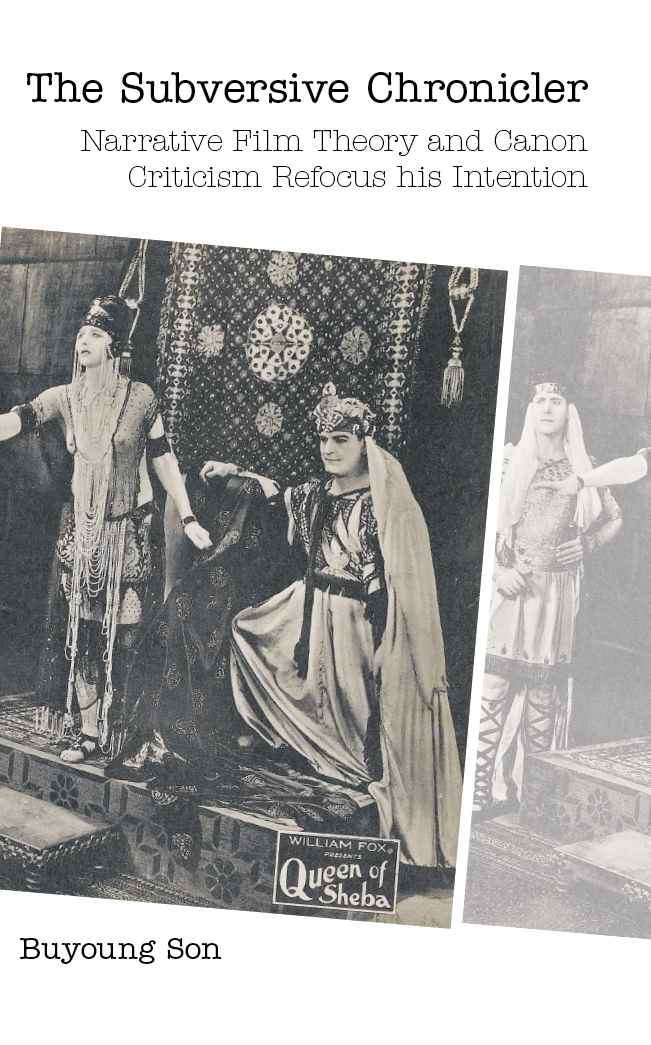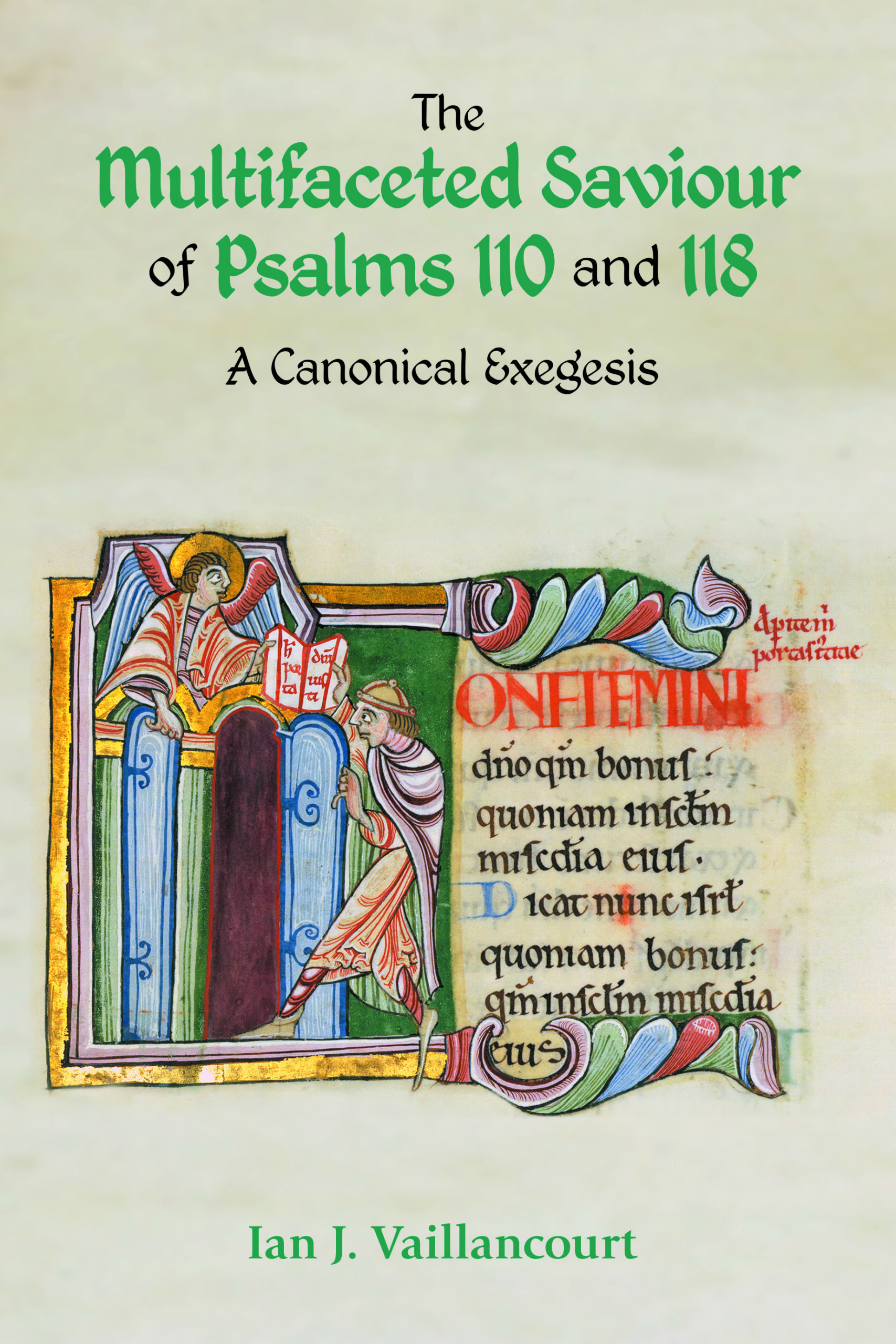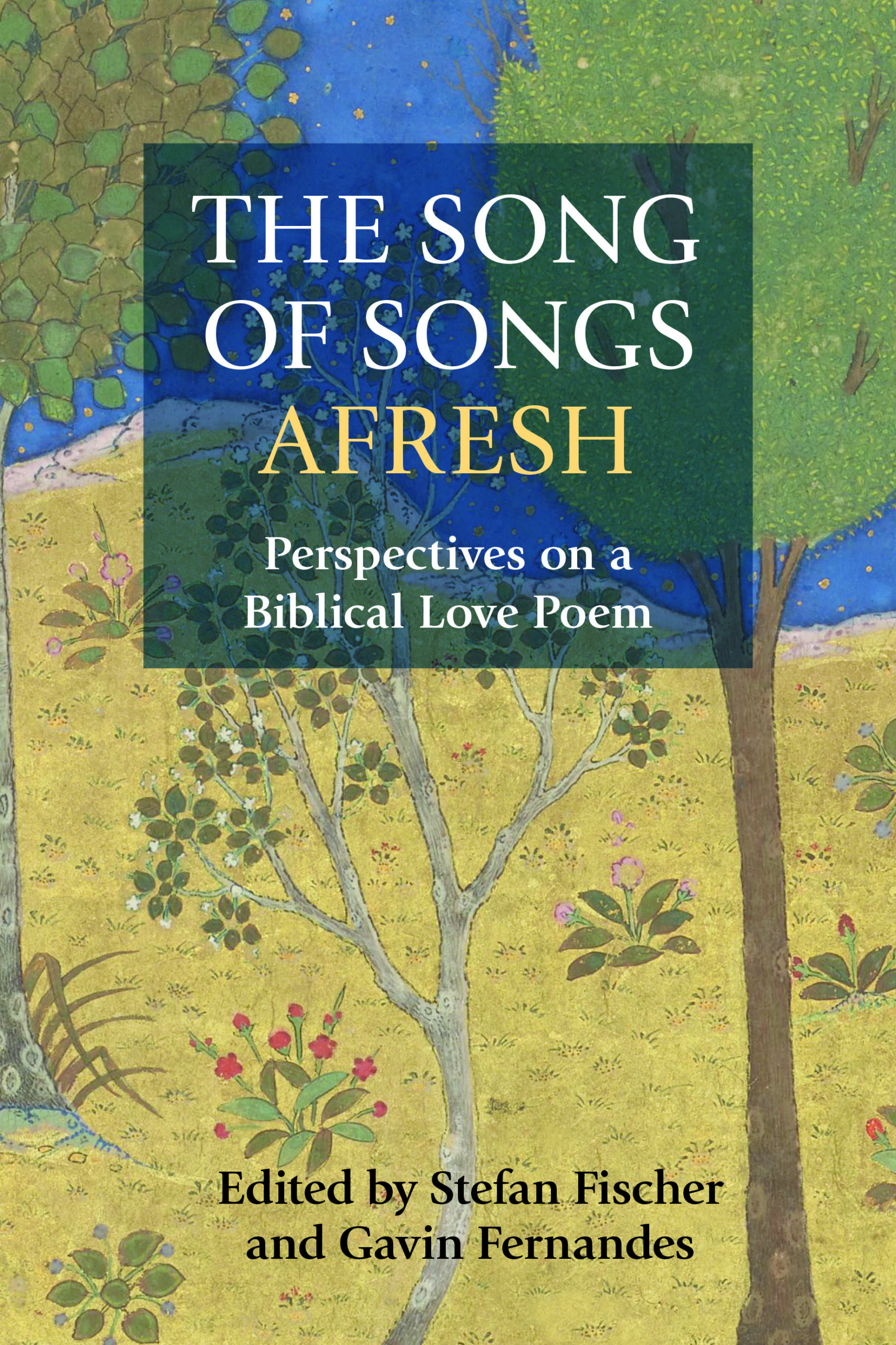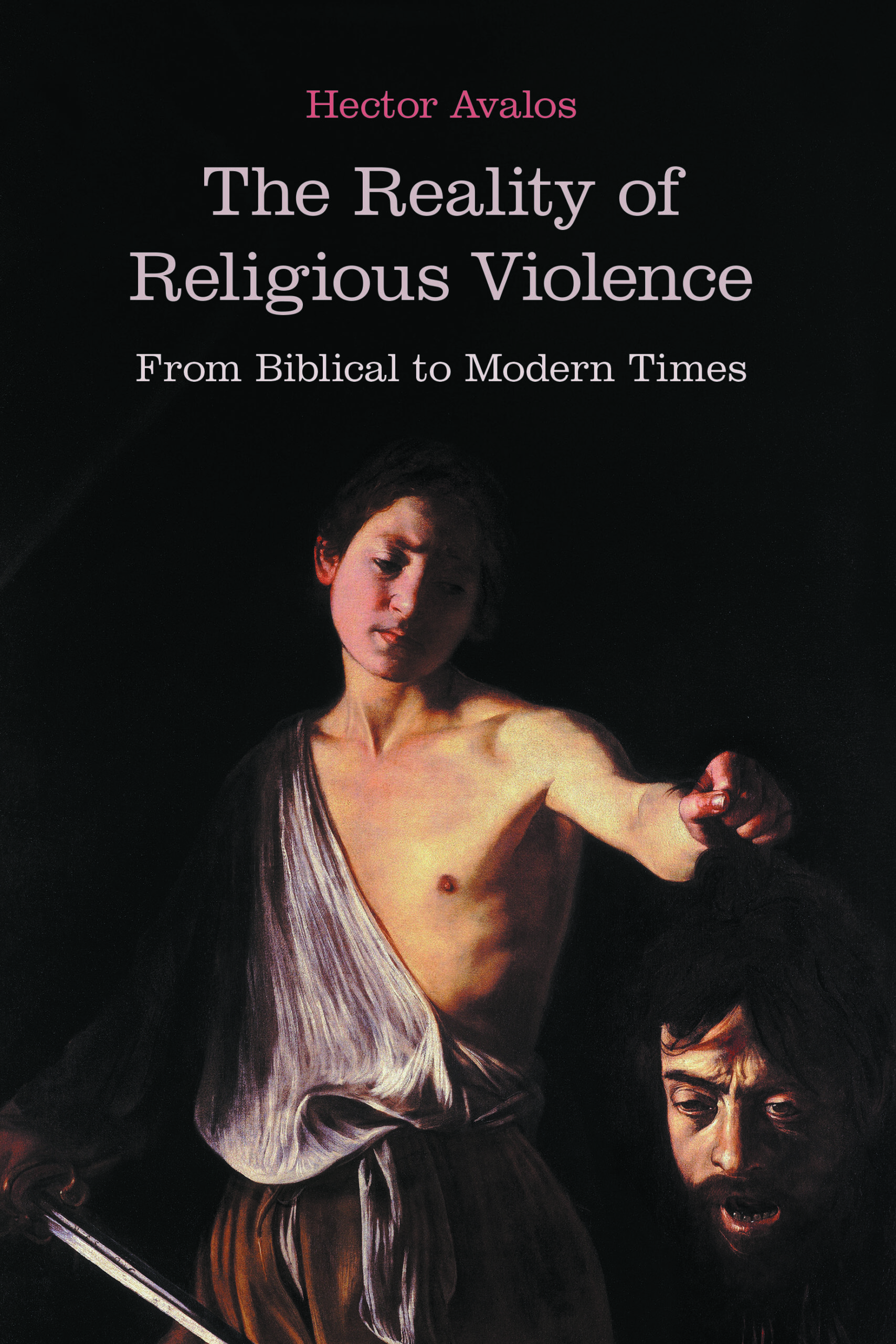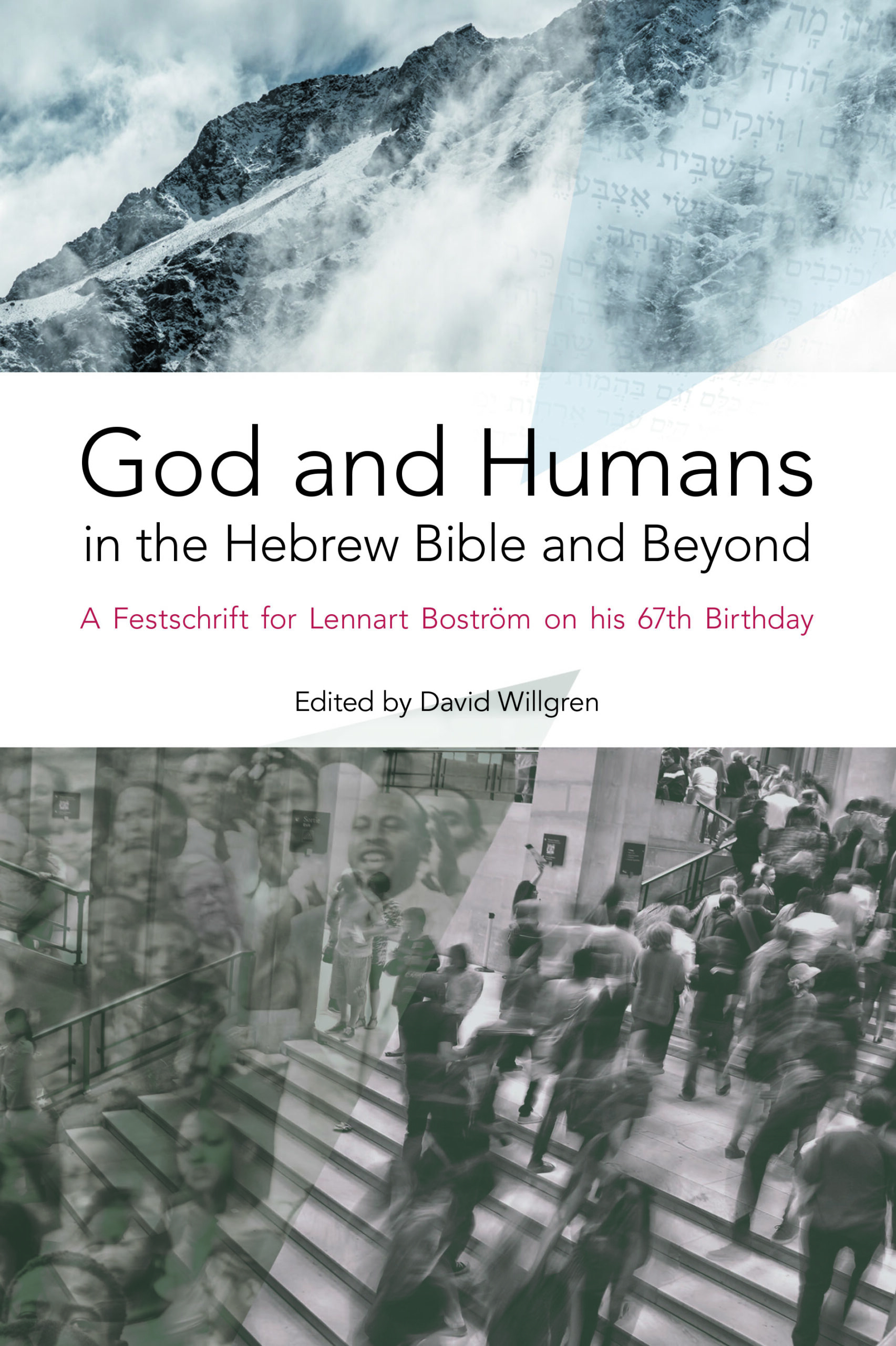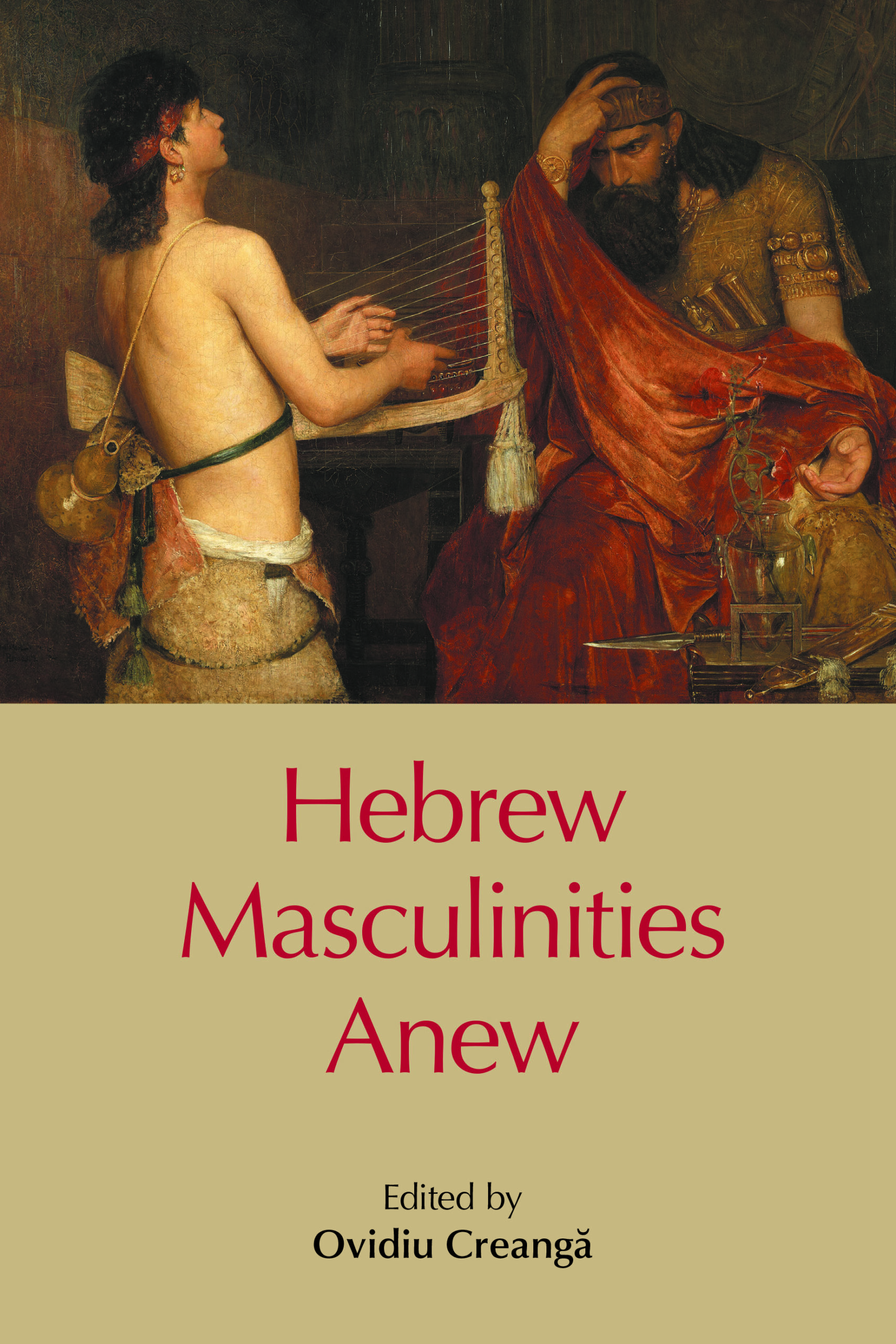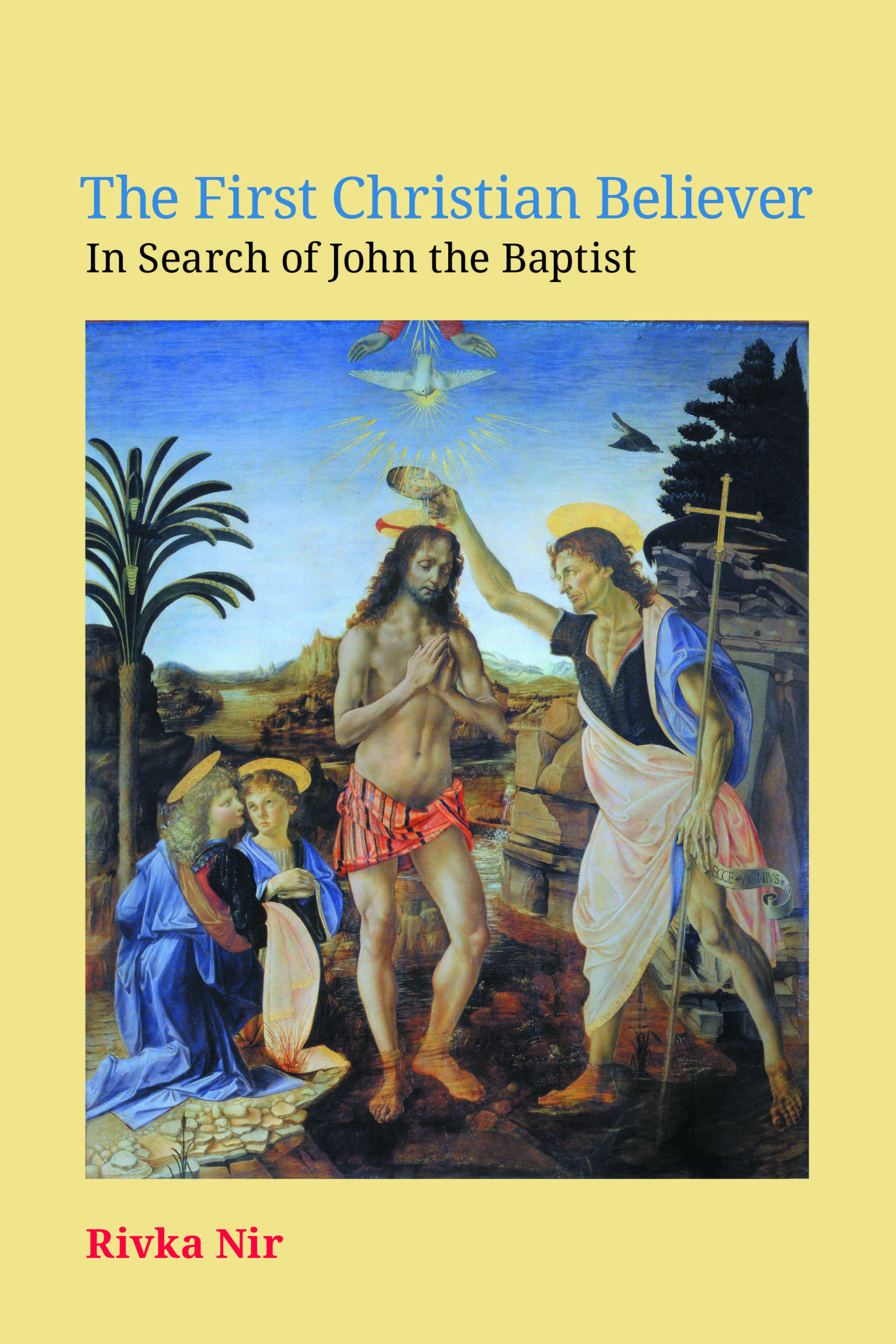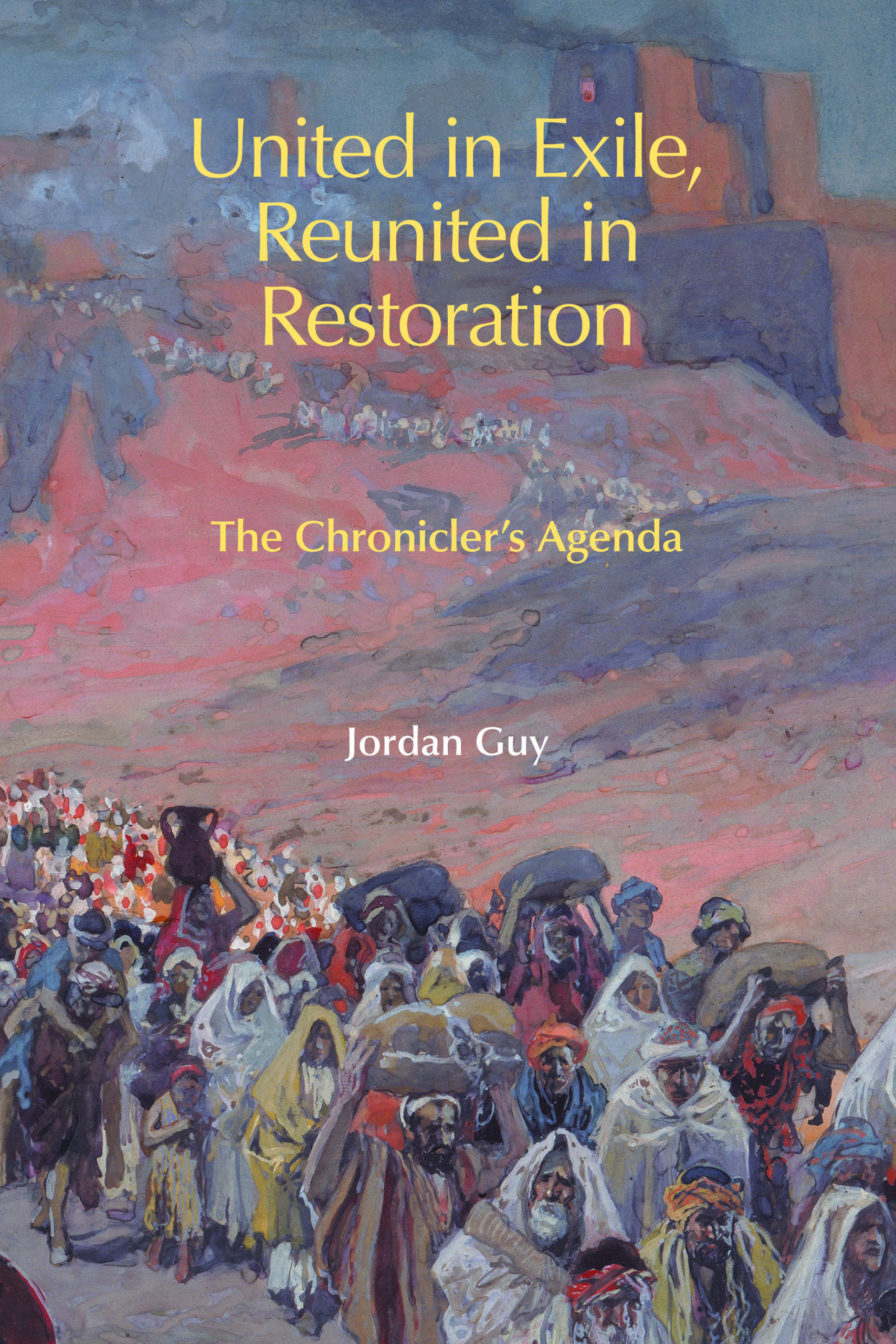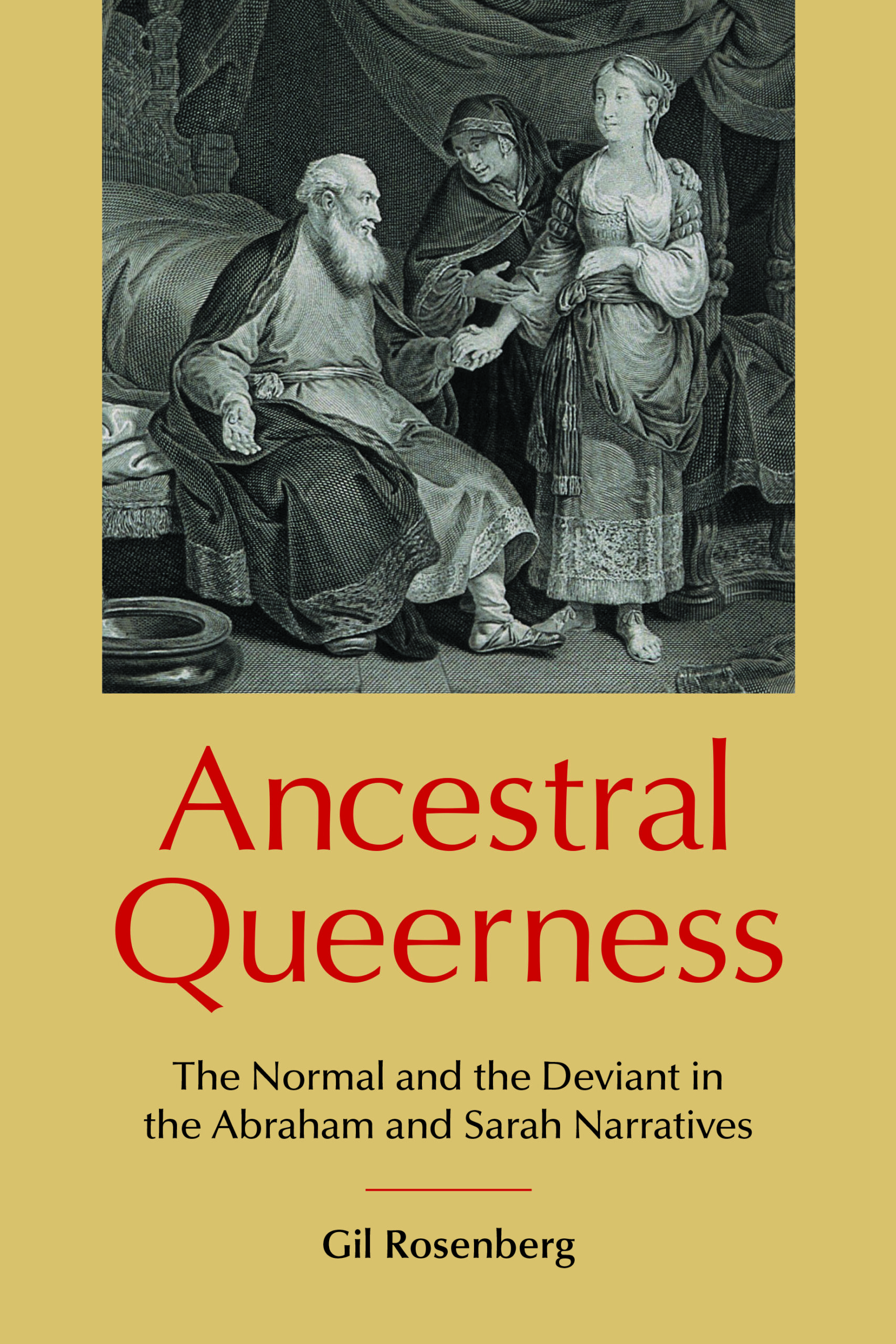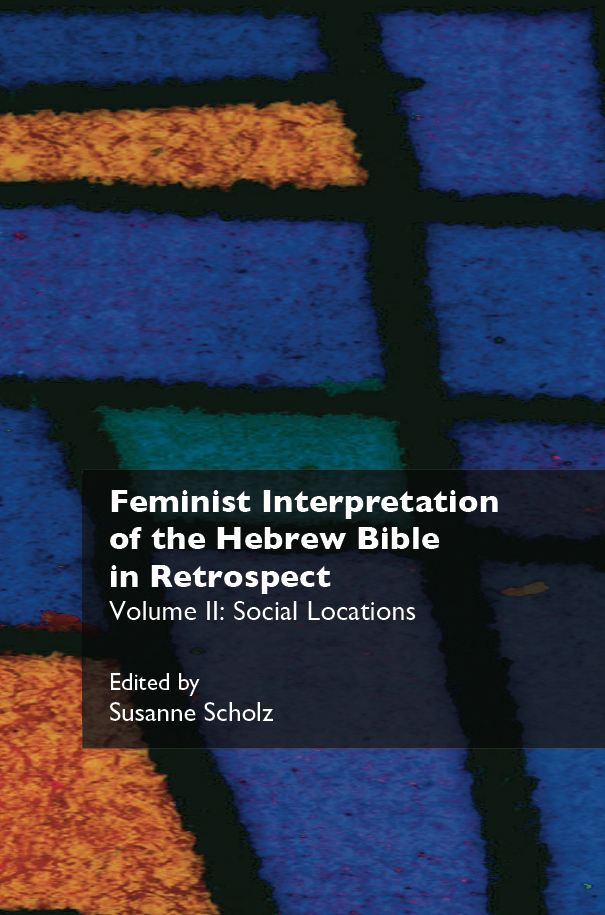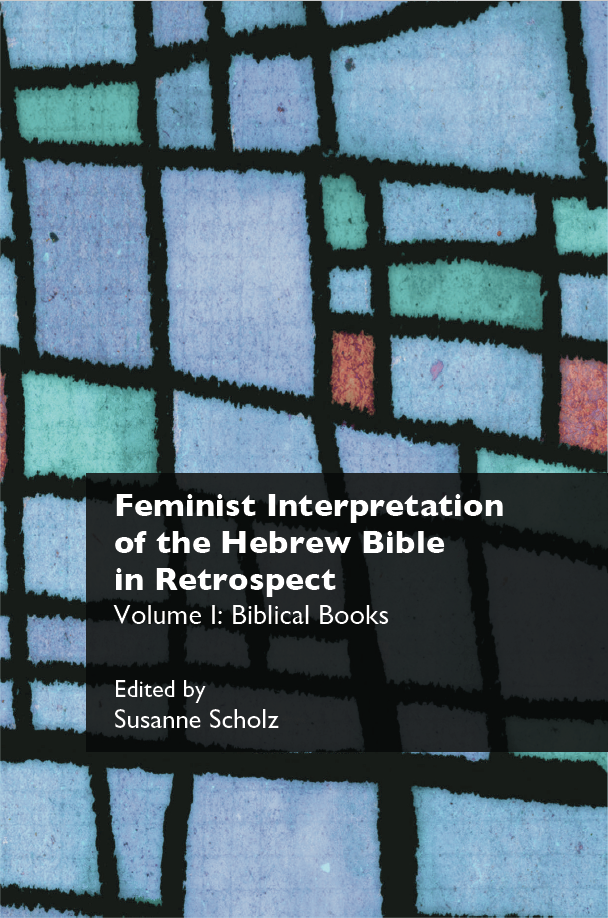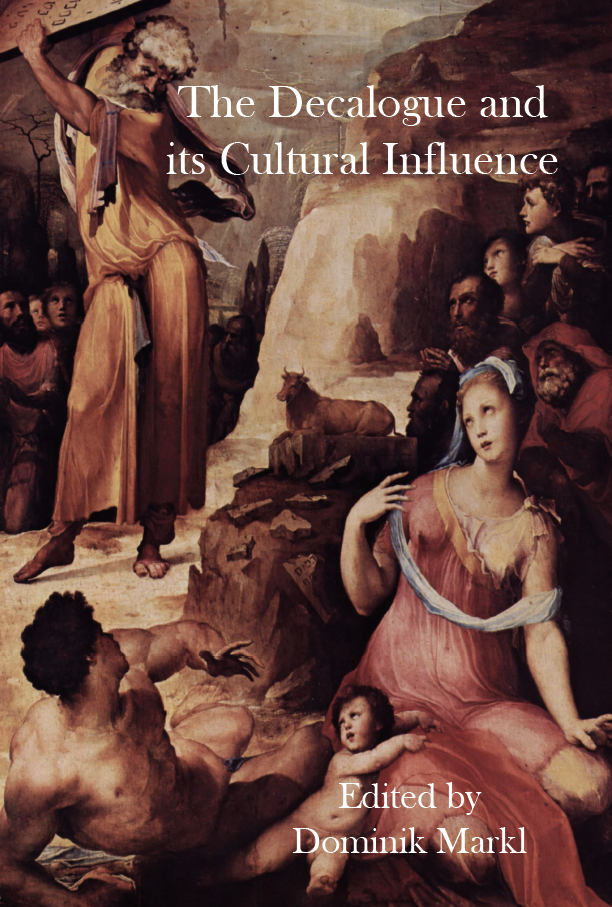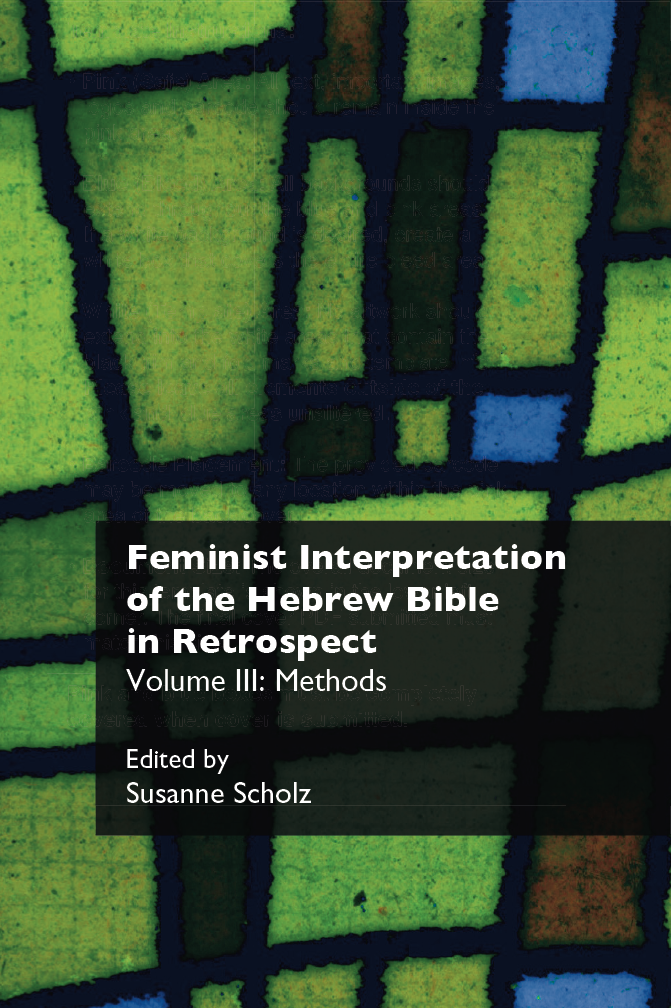Sequencing the Hebrew Bible: The Order of the Books
Published: July 2021
£55.00
If the order of the Hebrew Bible's books is significant, as many believe, why did differing arrangements of the Hebrew Bible emerge over time? This is a crucial question for Bible readers generally and especially for scholars of compilational criticism —the study of how the books of the Hebrew Bible were arranged in their various orders. Yet few compilational critics offer a solution to this problem and several fail even to recognize the issue. Sequencing the Hebrew Bible makes the novel proposal that multiple orders are part of the compositional intent of the framers of the Hebrew Bible. That is, those responsible for producing the final form of the Hebrew Bible's text created multiple ways in which its books could be meaningfully arranged. No single arrangement, as found in ancient manuscripts and lists of the books, can fully account for the compositional intent of these framers. The task of the compilational critic is to identify these arrangements, classify them, and evaluate the effect of these varying arrangements. This solution has implications both for the production of modern Bibles and for biblical theology. While some interested in compilational criticism argue that modern Bibles should be reorganized to reflect earlier arrangements of the biblical books, this study would suggest that such attempts would be limited in value. For only one of the several attested arrangements could be presented in any printed Bible. As for the idea of attempting to arrange the Bible chronologically, this study argues that to do so would inhibit the reader's understanding of the design of the biblical authors. Since biblical theology bridges the gap between historical-critical and theological studies, internal tensions between historical and theological analyses are often apparent within biblical theology. Compilational criticism helps to relieve these tensions by showing how theology underlies the formation of the Hebrew Bible.
Sequencing the Hebrew Bible: The Order of the Books
£55.00
If the order of the Hebrew Bible's books is significant, as many believe, why did differing arrangements of the Hebrew Bible emerge over time? This is a crucial question for Bible readers generally and especially for scholars of compilational criticism —the study of how the books of the Hebrew Bible were arranged in their various orders. Yet few compilational critics offer a solution to this problem and several fail even to recognize the issue. Sequencing the Hebrew Bible makes the novel proposal that multiple orders are part of the compositional intent of the framers of the Hebrew Bible. That is, those responsible for producing the final form of the Hebrew Bible's text created multiple ways in which its books could be meaningfully arranged. No single arrangement, as found in ancient manuscripts and lists of the books, can fully account for the compositional intent of these framers. The task of the compilational critic is to identify these arrangements, classify them, and evaluate the effect of these varying arrangements. This solution has implications both for the production of modern Bibles and for biblical theology. While some interested in compilational criticism argue that modern Bibles should be reorganized to reflect earlier arrangements of the biblical books, this study would suggest that such attempts would be limited in value. For only one of the several attested arrangements could be presented in any printed Bible. As for the idea of attempting to arrange the Bible chronologically, this study argues that to do so would inhibit the reader's understanding of the design of the biblical authors. Since biblical theology bridges the gap between historical-critical and theological studies, internal tensions between historical and theological analyses are often apparent within biblical theology. Compilational criticism helps to relieve these tensions by showing how theology underlies the formation of the Hebrew Bible.
Jesus the Dayspring: The Sunrise and the Visitation of Israel’s Messiah
Published: May 2021
£65.00
Messianic expectations in the first century ce were varied, but rarely did they include a figure associated with the sunrise or the direction of the east. However, in Luke's gospel the prophetic song (the 'Benedictus') of the priest Zechariah, father of John the Baptist, includes a title for Jesus that means the 'dayspring', 'dawn', or 'rising sun'. Where did this title arise?
In Jesus the Dayspring, Wenkel suggests that the connection between Jesus and the sunrise may have come from any number of texts and traditions contributing to the expectation of God's divine presence visiting his people from the sunrise. The idea of the Lord who comes from the east also plays an important role in Luke's narrative of Jesus arriving in Jerusalem from the eastern side of the city as he enters from the Mount of Olives. Such details are often underappreciated but contribute to our understanding of Jesus as a messianic figure who would come like the sunrise.
Wenkel's search for other potential influences leading to this type of messianic language takes him into Genesis, Exodus, Isaiah, Hosea and Malachi. By casting his net to include allusions to looking eastward for redemptive hope, Wenkel suggests how Luke's portrait of Jesus as the 'dayspring' or 'sunrise' fits into a larger pattern of resonance across Israel's scriptures.
Jesus the Dayspring: The Sunrise and the Visitation of Israel’s Messiah
£65.00
Messianic expectations in the first century ce were varied, but rarely did they include a figure associated with the sunrise or the direction of the east. However, in Luke's gospel the prophetic song (the 'Benedictus') of the priest Zechariah, father of John the Baptist, includes a title for Jesus that means the 'dayspring', 'dawn', or 'rising sun'. Where did this title arise?
In Jesus the Dayspring, Wenkel suggests that the connection between Jesus and the sunrise may have come from any number of texts and traditions contributing to the expectation of God's divine presence visiting his people from the sunrise. The idea of the Lord who comes from the east also plays an important role in Luke's narrative of Jesus arriving in Jerusalem from the eastern side of the city as he enters from the Mount of Olives. Such details are often underappreciated but contribute to our understanding of Jesus as a messianic figure who would come like the sunrise.
Wenkel's search for other potential influences leading to this type of messianic language takes him into Genesis, Exodus, Isaiah, Hosea and Malachi. By casting his net to include allusions to looking eastward for redemptive hope, Wenkel suggests how Luke's portrait of Jesus as the 'dayspring' or 'sunrise' fits into a larger pattern of resonance across Israel's scriptures.
The Great Drama of Jeremiah: A Performance Reading
Published: May 2021
£65.00
In this original work, joining the growing corpus of performance criticism of Hebrew Bible texts, Billingham offers a performance reading of some eleven scenes in the book of Jeremiah, analysing their scripts, actors/speakers, audiences, settings and improvisation of scripts. While kings, priests, prophets and people act in various ways in these performances, Jeremiah himself plays an important role both in reporting their actions and in delivering speeches proclaiming Yhwh's oracles. Earth and members of the Earth community also raise their voices in distress at the absence of the exiled people. The people of the exile themselves can be assumed as the audience if no other is designated in a scene; it will be their role to process the experiences of the drama. Various socio-political and geographical contexts provide safe settings in which they may view the traumatic events that unfold. In a synchronic reading, Billingham argues that Jeremiah improvises several old Israelite traditions, applying them to the new context of exile, challenging the prevailing royal-priestly ideology, and prompting the audience to rethink its beliefs, attitudes and actions.
Among the performances analysed in this book are the divine ultrasound of the pre-natal prophet, Jeremiah's vision of the reversal of creation, the people's search for a single righteous person in Jerusalem, the siege of the city and (horror!) the destruction of the temple. In a ludicrous contest with the idols, the best god wins. And Jeremiah smashes a pot as a sign-act for Judah's destruction. This heuristic reading of Jeremiah invites readers to interact with Jeremiah's messages as dramatic performances that may be brought to life in their own experiences of crisis, challenge and triumph.
The Great Drama of Jeremiah: A Performance Reading
£65.00
In this original work, joining the growing corpus of performance criticism of Hebrew Bible texts, Billingham offers a performance reading of some eleven scenes in the book of Jeremiah, analysing their scripts, actors/speakers, audiences, settings and improvisation of scripts. While kings, priests, prophets and people act in various ways in these performances, Jeremiah himself plays an important role both in reporting their actions and in delivering speeches proclaiming Yhwh's oracles. Earth and members of the Earth community also raise their voices in distress at the absence of the exiled people. The people of the exile themselves can be assumed as the audience if no other is designated in a scene; it will be their role to process the experiences of the drama. Various socio-political and geographical contexts provide safe settings in which they may view the traumatic events that unfold. In a synchronic reading, Billingham argues that Jeremiah improvises several old Israelite traditions, applying them to the new context of exile, challenging the prevailing royal-priestly ideology, and prompting the audience to rethink its beliefs, attitudes and actions.
Among the performances analysed in this book are the divine ultrasound of the pre-natal prophet, Jeremiah's vision of the reversal of creation, the people's search for a single righteous person in Jerusalem, the siege of the city and (horror!) the destruction of the temple. In a ludicrous contest with the idols, the best god wins. And Jeremiah smashes a pot as a sign-act for Judah's destruction. This heuristic reading of Jeremiah invites readers to interact with Jeremiah's messages as dramatic performances that may be brought to life in their own experiences of crisis, challenge and triumph.
Abishag: Administrator of King David’s Household
Published: May 2021
£80.00
Following Daniel Bodi's previous monographs on the three wives of King David —Michal, Bathsheba and Abigail —here is a fourth one on Abishag, the last woman in his life. It has not been recognized before how decisive a role she played as a palace administrator in David's final political crisis, Adonijah's coup d’état , and Solomon's proclamation as king.
Hitherto, Abishag has been given androcentric readings. Her position as administrator has been demoted to that of a mere housekeeper, bedfellow or even hot-water bottle. Some rabbinic authors transformed her into an androgynous being, claiming an intersex person warms better than a young female virgin. In fact, the term for Abishag's office as sōkenet is nothing but the feminine form of sken 'palace steward', a well-known functionary across the Semitic world. Much more than a simple housekeeper, Abishag wields administrative power with a legal role as a witness in Solomon's appointment.
Exploring further the role of women at royal courts, Bodi also offers a comparative analysis of the famous queens who played a role in the royal succession as kings' mothers in Egypt, Mari, Hatti, Ugarit and Assyria. Solomon's appointment as David's successor results from a palace putsch, executed with cunning and craftiness, which are to be understood as archaic forms of wisdom in the Hebrew Bible, classical Greece and the ancient Near East.
The stories of David's wives —and of Abishag —together form a Hebrew document in the style of an Advice to a Prince. An interesting comparison is drawn between David's four wives and the four females Odysseus encounters in Homer's Odyssey: Circe, Calypso, Nausicaa and Penelope. Strikingly, the Hebrew version of the Advice to a Prince and the Homeric Epic were being written at roughly the same time, the end of the eighth century bce.
Abishag: Administrator of King David’s Household
£80.00
Following Daniel Bodi's previous monographs on the three wives of King David —Michal, Bathsheba and Abigail —here is a fourth one on Abishag, the last woman in his life. It has not been recognized before how decisive a role she played as a palace administrator in David's final political crisis, Adonijah's coup d’état , and Solomon's proclamation as king.
Hitherto, Abishag has been given androcentric readings. Her position as administrator has been demoted to that of a mere housekeeper, bedfellow or even hot-water bottle. Some rabbinic authors transformed her into an androgynous being, claiming an intersex person warms better than a young female virgin. In fact, the term for Abishag's office as sōkenet is nothing but the feminine form of sken 'palace steward', a well-known functionary across the Semitic world. Much more than a simple housekeeper, Abishag wields administrative power with a legal role as a witness in Solomon's appointment.
Exploring further the role of women at royal courts, Bodi also offers a comparative analysis of the famous queens who played a role in the royal succession as kings' mothers in Egypt, Mari, Hatti, Ugarit and Assyria. Solomon's appointment as David's successor results from a palace putsch, executed with cunning and craftiness, which are to be understood as archaic forms of wisdom in the Hebrew Bible, classical Greece and the ancient Near East.
The stories of David's wives —and of Abishag —together form a Hebrew document in the style of an Advice to a Prince. An interesting comparison is drawn between David's four wives and the four females Odysseus encounters in Homer's Odyssey: Circe, Calypso, Nausicaa and Penelope. Strikingly, the Hebrew version of the Advice to a Prince and the Homeric Epic were being written at roughly the same time, the end of the eighth century bce.
Lukan Parables of Reckless Liberality
Published: Apr 2021
£60.00
From among the many parables in Luke, Amanda Brobst-Renaud chooses three, which she names 'parables of reckless liberality': the Prodigal Son, the Shrewd Steward, and the Rich Man and Lazarus. Picking up on the supposed slur that Jesus 'welcomes sinners and dines with them', Luke encourages his audience in these parables from chaps. 15 —16 in a practice of giving excessively to the wrong people at inappropriate times (flouting Aristotle's advice on liberality in the Nicomachean Ethics).
Each parable in this volume presents at least one of its characters in crisis; these situations demand a decisive response. We all know the crises faced by the younger son, the steward, and the rich man, but the crises confronting the elder son and the rich man's brothers are equally dire, starkly sketched by the open questions left hanging at the end of each parable. Will the elder son join the party, celebrating his once-dead younger brother? Will the steward secure an eternal welcome? Will the rich man's brothers heed Moses and the prophets, or will they meet the same fate as the rich man?
In each case, reckless liberality answers the characters' quandaries and demands of Luke's auditors that they choose between emulating or avoiding the behaviors of the characters. The elder son should join the party and imitate his father's reckless liberality: giving to someone undeserving, at an inappropriate time, and to an excessive amount. The steward's highly questionable profligacy plus his debt-reduction schemes nevertheless earn his master's praise and secure his welcome (Lk. 16.9). The rich man's brothers should listen to the call of the law and the prophets to care for the poor and disenfranchised, and show reckless liberality to any Lazarus on their thresholds. Showing reckless liberality gives entrance into the eschatological party (Lk. 16.16).
Lukan Parables of Reckless Liberality
£60.00
From among the many parables in Luke, Amanda Brobst-Renaud chooses three, which she names 'parables of reckless liberality': the Prodigal Son, the Shrewd Steward, and the Rich Man and Lazarus. Picking up on the supposed slur that Jesus 'welcomes sinners and dines with them', Luke encourages his audience in these parables from chaps. 15 —16 in a practice of giving excessively to the wrong people at inappropriate times (flouting Aristotle's advice on liberality in the Nicomachean Ethics).
Each parable in this volume presents at least one of its characters in crisis; these situations demand a decisive response. We all know the crises faced by the younger son, the steward, and the rich man, but the crises confronting the elder son and the rich man's brothers are equally dire, starkly sketched by the open questions left hanging at the end of each parable. Will the elder son join the party, celebrating his once-dead younger brother? Will the steward secure an eternal welcome? Will the rich man's brothers heed Moses and the prophets, or will they meet the same fate as the rich man?
In each case, reckless liberality answers the characters' quandaries and demands of Luke's auditors that they choose between emulating or avoiding the behaviors of the characters. The elder son should join the party and imitate his father's reckless liberality: giving to someone undeserving, at an inappropriate time, and to an excessive amount. The steward's highly questionable profligacy plus his debt-reduction schemes nevertheless earn his master's praise and secure his welcome (Lk. 16.9). The rich man's brothers should listen to the call of the law and the prophets to care for the poor and disenfranchised, and show reckless liberality to any Lazarus on their thresholds. Showing reckless liberality gives entrance into the eschatological party (Lk. 16.16).
The Ancient Near East in the Nineteenth Century: III. Fantasy and Alternative Histories
Published: Mar 2021
£22.00 – £70.00
At the beginning of the nineteenth century, little was known of the ancient Near East except for what was preserved in the Bible and classical literature. By the end of the nineteenth century, an amazing transformation had occurred: the basic outline of ancient Near Eastern history was understood and the material culture of the region was recognizable to the general public. This three-volume study explores the various ways that non-specialists would have encountered ancient Egypt, Mesopotamia, and the Holy Land and how they derived and constructed meaning from those discoveries. McGeough challenges the simplistic view that the experience of the ancient Near East was solely a matter of 'othering' and shows how different people claimed the Near East as their own space and how connections were drawn between the ancient and contemporary worlds.
Volume III argues that fiction and fantasy play an important role in establishing expectations about the past. Changing sensitivities towards realism in art meant that imaginary visions were charged with an archaeological aesthetic. Orientalist painting offered seemingly realistic glimpses of ancient life. Stage plays and opera used the ancient Near East for performances that explored contemporary issues. Mummy stories evolved from humorous time-travel tales into horror fiction rooted in fears of materialism, and adventure novels ruminated on the obligations and dangers of empire.
Alongside these explicitly fictional modes of thinking about the past, the nineteenth century saw a rise in popularity of esoteric thinking. People offered alternative versions of ancient history, imagining that ancient religious practices continued into the present, through secret societies like the Freemasons and the Rosicrucians or in the new movements of Mormonism and Theosophy. Volume III ends by examining the interpretations of the Near East offered by Sigmund Freud and H.P. Lovecraft, showing how these two figures influenced later popular experiences of the ancient Near East.
The Ancient Near East in the Nineteenth Century: III. Fantasy and Alternative Histories
£22.00 – £70.00
At the beginning of the nineteenth century, little was known of the ancient Near East except for what was preserved in the Bible and classical literature. By the end of the nineteenth century, an amazing transformation had occurred: the basic outline of ancient Near Eastern history was understood and the material culture of the region was recognizable to the general public. This three-volume study explores the various ways that non-specialists would have encountered ancient Egypt, Mesopotamia, and the Holy Land and how they derived and constructed meaning from those discoveries. McGeough challenges the simplistic view that the experience of the ancient Near East was solely a matter of 'othering' and shows how different people claimed the Near East as their own space and how connections were drawn between the ancient and contemporary worlds.
Volume III argues that fiction and fantasy play an important role in establishing expectations about the past. Changing sensitivities towards realism in art meant that imaginary visions were charged with an archaeological aesthetic. Orientalist painting offered seemingly realistic glimpses of ancient life. Stage plays and opera used the ancient Near East for performances that explored contemporary issues. Mummy stories evolved from humorous time-travel tales into horror fiction rooted in fears of materialism, and adventure novels ruminated on the obligations and dangers of empire.
Alongside these explicitly fictional modes of thinking about the past, the nineteenth century saw a rise in popularity of esoteric thinking. People offered alternative versions of ancient history, imagining that ancient religious practices continued into the present, through secret societies like the Freemasons and the Rosicrucians or in the new movements of Mormonism and Theosophy. Volume III ends by examining the interpretations of the Near East offered by Sigmund Freud and H.P. Lovecraft, showing how these two figures influenced later popular experiences of the ancient Near East.
The Ancient Near East in the Nineteenth Century: II. Collecting, Constructing, and Curating
Published: Mar 2021
£23.00 – £70.00
At the beginning of the nineteenth century, little was known of the ancient Near East except for what was preserved in the Bible and classical literature. By the end of the nineteenth century, an amazing transformation had occurred: the basic outline of ancient Near Eastern history was understood and the material culture of the region was recognizable to the general public. This three-volume study explores the various ways that non-specialists would have encountered ancient Egypt, Mesopotamia, and the Holy Land and how they derived and constructed meaning from those discoveries. McGeough challenges the simplistic view that the experience of the ancient Near East was solely a matter of 'othering' and shows how different people claimed the Near East as their own space and how connections were drawn between the ancient and contemporary worlds.
Volume II examines the different ways that non-specialists encountered the materiality of the ancient Near East over the course of the nineteenth century. During this time, people collected artifacts while traveling in the region or paid to see the collections that others brought back. The public experienced the ancient world in museum exhibits that privileged 'real' artifacts in a new context or in hyper-real displays (like the Crystal Palace) where whole buildings from the ancient Near East were reconstructed. Men and women dressed as biblical characters in travelling fairs or spent an evening unwrapping a mummy. Individuals bought Assyriological souvenirs and employed Egyptian styles in their design, first in higher quality designer products and later in novelty items. Egyptian temples provided the architectural inspiration for buildings in London and the ancient use of colour was a strong argument for reimagining Victorian style. The adoption of Egypt, especially, in the world's-fair phenomenon linked the ancient Near East with a global future in which change was naturalized and consumers were taught not to be afraid of the transformations brought by the industrial age.
The Ancient Near East in the Nineteenth Century: II. Collecting, Constructing, and Curating
£23.00 – £70.00
At the beginning of the nineteenth century, little was known of the ancient Near East except for what was preserved in the Bible and classical literature. By the end of the nineteenth century, an amazing transformation had occurred: the basic outline of ancient Near Eastern history was understood and the material culture of the region was recognizable to the general public. This three-volume study explores the various ways that non-specialists would have encountered ancient Egypt, Mesopotamia, and the Holy Land and how they derived and constructed meaning from those discoveries. McGeough challenges the simplistic view that the experience of the ancient Near East was solely a matter of 'othering' and shows how different people claimed the Near East as their own space and how connections were drawn between the ancient and contemporary worlds.
Volume II examines the different ways that non-specialists encountered the materiality of the ancient Near East over the course of the nineteenth century. During this time, people collected artifacts while traveling in the region or paid to see the collections that others brought back. The public experienced the ancient world in museum exhibits that privileged 'real' artifacts in a new context or in hyper-real displays (like the Crystal Palace) where whole buildings from the ancient Near East were reconstructed. Men and women dressed as biblical characters in travelling fairs or spent an evening unwrapping a mummy. Individuals bought Assyriological souvenirs and employed Egyptian styles in their design, first in higher quality designer products and later in novelty items. Egyptian temples provided the architectural inspiration for buildings in London and the ancient use of colour was a strong argument for reimagining Victorian style. The adoption of Egypt, especially, in the world's-fair phenomenon linked the ancient Near East with a global future in which change was naturalized and consumers were taught not to be afraid of the transformations brought by the industrial age.
Reading the Magnificat in Australia: Unsettling Engagements
Published: Nov 2020
£70.00
Biblical songs have multiple afterlives. In a history of invasion, their reverberations are poignant. What is now called Australia is a continent of many First Nations where Country has been sung for tens of thousands of years before the Bible arrived as part of the cultural cargo of the colonisers. Reading the Magnificat in Australia focuses on one text, Mary's Magnificat, around two thousand years old in its Lukan form, and carrying Hebraic traditions some thousand or more years older. First Nations traditions are older still.
In this colonial context, the Magnificat inspired settler-migrant writing, composition and art. Reading the Magnificat in Australia is a settler reading, but not a conventional one. It offers a performative, conversational reading trajectory that places instances of cultural reception of the Magnificat in the context of colonial occupation of Country, the problematics of whiteness, and the ensuing hiatuses for settler biblical scholars in Australia.
Reading the Magnificat as a song of protest, placed in the mouth of a young Jewish woman of the first century ce, Anne Elvey sketches a counter-colonial reading practice that in compassionate grief and hope is attentive to the ecological trauma of our time. The readings engage with creative responses to the Magnificat, from pious verse to abstract expressionist art, and include a number of the author's creative engagements in response. Grounded in feminist and ecological approaches, Reading the Magnificat in Australia employs hermeneutics of restraint, intertextual engagement and creative witness, rereading the biblical text in relation to contexts of conflict, intersections of race, gender, species and sexuality, constructive and deconstructive materialities in colonised space, and finally the song of birds (of which the Australian magpies on the front cover are an emblem). This listening again to an ancient text reimagines an aesthetics of reading-as-writing that opens to a situated and unsettled praxis, where the Magnificat points inward to its material contingency as a colonial artefact and outward toward contemporary songs of protest.
Reading the Magnificat in Australia: Unsettling Engagements
£70.00
Biblical songs have multiple afterlives. In a history of invasion, their reverberations are poignant. What is now called Australia is a continent of many First Nations where Country has been sung for tens of thousands of years before the Bible arrived as part of the cultural cargo of the colonisers. Reading the Magnificat in Australia focuses on one text, Mary's Magnificat, around two thousand years old in its Lukan form, and carrying Hebraic traditions some thousand or more years older. First Nations traditions are older still.
In this colonial context, the Magnificat inspired settler-migrant writing, composition and art. Reading the Magnificat in Australia is a settler reading, but not a conventional one. It offers a performative, conversational reading trajectory that places instances of cultural reception of the Magnificat in the context of colonial occupation of Country, the problematics of whiteness, and the ensuing hiatuses for settler biblical scholars in Australia.
Reading the Magnificat as a song of protest, placed in the mouth of a young Jewish woman of the first century ce, Anne Elvey sketches a counter-colonial reading practice that in compassionate grief and hope is attentive to the ecological trauma of our time. The readings engage with creative responses to the Magnificat, from pious verse to abstract expressionist art, and include a number of the author's creative engagements in response. Grounded in feminist and ecological approaches, Reading the Magnificat in Australia employs hermeneutics of restraint, intertextual engagement and creative witness, rereading the biblical text in relation to contexts of conflict, intersections of race, gender, species and sexuality, constructive and deconstructive materialities in colonised space, and finally the song of birds (of which the Australian magpies on the front cover are an emblem). This listening again to an ancient text reimagines an aesthetics of reading-as-writing that opens to a situated and unsettled praxis, where the Magnificat points inward to its material contingency as a colonial artefact and outward toward contemporary songs of protest.
Spirit and Story: Essays in Honour of John Christopher Thomas
Published: Nov 2020
£70.00
This collection of essays brings together an international group of biblical scholars, theologians, and historians who are committed to readings of biblical texts that are sensitive to the work of the Spirit. Perhaps no one has contributed more in recent decades to the description and promotion of Pentecostal Theology than Chris Thomas, and this volume serves as a loving and respectful tribute to his commitment and achievement.
Thomas's own work on the story told in the Gospel and Letters of John as well as his explorations into the narrative structure of the Apocalypse are models not only of exegetical proficiency but also of the careful elucidation of the text for the general reader as well as the expert. Moreover, his work is distinguished by a prayerful pastoral commitment as his ear is consistently attentive to what the Spirit is saying to the church.
The influence of Chris Thomas has been very considerable. The essays presented here capture the scope of his interests and of his important contribution to both the church and the academy.
Spirit and Story: Essays in Honour of John Christopher Thomas
£70.00
This collection of essays brings together an international group of biblical scholars, theologians, and historians who are committed to readings of biblical texts that are sensitive to the work of the Spirit. Perhaps no one has contributed more in recent decades to the description and promotion of Pentecostal Theology than Chris Thomas, and this volume serves as a loving and respectful tribute to his commitment and achievement.
Thomas's own work on the story told in the Gospel and Letters of John as well as his explorations into the narrative structure of the Apocalypse are models not only of exegetical proficiency but also of the careful elucidation of the text for the general reader as well as the expert. Moreover, his work is distinguished by a prayerful pastoral commitment as his ear is consistently attentive to what the Spirit is saying to the church.
The influence of Chris Thomas has been very considerable. The essays presented here capture the scope of his interests and of his important contribution to both the church and the academy.
The Bible and Money: Economy and Socioeconomic Ethics in the Bible
Published: Nov 2020
£70.00
What does the Bible say about money? This volume presents the researches of 18 international biblical scholars at Ansgarskolen«s Norwegian Summer Academy for Biblical Studies. Papers include:
The Prophets on Trade: Did They Consider it a Canaanite Affair?
Two Categories of Loans in the Old Testament á Give Willingly and Do Not Expect Anything? A Biblical View on Loans and Interest
Government and Economy in the Hebrew Bible: Taxes and Related Issues á State and Temple Economy in the Levant in the Persian and Hellenistic Periods
Economics and Poverty: Negotiating the Spectrum of Personal Wealth or Shared Resources
Proportionate and Sufficient Wealth: Financial Transparency in Paul's Collection for the Saints in Jerusalem á Engaging the New Testament and the Welfare State
Divine Plenty, Human Thriftiness: A Canonical Reading of (Un)Limited Resources This unusual volume is a useful resource for researchers, but also a coursebook to be used in the classroom and a comprehensive introduction to biblical economic ethics in general.
The Bible and Money: Economy and Socioeconomic Ethics in the Bible
£70.00
What does the Bible say about money? This volume presents the researches of 18 international biblical scholars at Ansgarskolen«s Norwegian Summer Academy for Biblical Studies. Papers include:
The Prophets on Trade: Did They Consider it a Canaanite Affair?
Two Categories of Loans in the Old Testament á Give Willingly and Do Not Expect Anything? A Biblical View on Loans and Interest
Government and Economy in the Hebrew Bible: Taxes and Related Issues á State and Temple Economy in the Levant in the Persian and Hellenistic Periods
Economics and Poverty: Negotiating the Spectrum of Personal Wealth or Shared Resources
Proportionate and Sufficient Wealth: Financial Transparency in Paul's Collection for the Saints in Jerusalem á Engaging the New Testament and the Welfare State
Divine Plenty, Human Thriftiness: A Canonical Reading of (Un)Limited Resources This unusual volume is a useful resource for researchers, but also a coursebook to be used in the classroom and a comprehensive introduction to biblical economic ethics in general.
Job: From Lament to Penitence
Published: Nov 2020
£60.00
Recent form-critical studies from Mark Boda and Rodney Werline among others have brought about an increased interest in the penitential form and a recognition of the form as distinct and derivative from the lament form. This development in scholarship has enabled the present study to develop a new analysis of the penitential form in Job and its interaction with the lament form.
Using the methodological frameworks of form criticism and eco-anthropology —which studies how human identity is formed in relation with the natural world —, Breitkopf argues that the voice of the character Job undergoes a marked shift from lament to penitence as the book proceeds. It corresponds to a shift in the character's worldview, evinced in the book's language about the natural order.
Negative language and imagery about nature is abundant in Job, e.g. when Job in chapter 3 curses existence (especially birth and life) and invokes Leviathan. In so doing, Job discloses his understanding of humanity as dominant over the natural world. But as the book of Job nears its end, the divine speeches, where wild animals and Leviathan are described as thriving and free from human control, subvert Job's negative language.
Fundamentally, Breitkopf argues, Job's language, such as in chapter 3, is challenged by the divine speeches. Job's final words in response, especially in 42.6, expressed in penitential language, signal a reconsideration of his human identity as mere “dust and ash” within the framework of the natural world and represent a striking change from his original outlook.
Job: From Lament to Penitence
£60.00
Recent form-critical studies from Mark Boda and Rodney Werline among others have brought about an increased interest in the penitential form and a recognition of the form as distinct and derivative from the lament form. This development in scholarship has enabled the present study to develop a new analysis of the penitential form in Job and its interaction with the lament form.
Using the methodological frameworks of form criticism and eco-anthropology —which studies how human identity is formed in relation with the natural world —, Breitkopf argues that the voice of the character Job undergoes a marked shift from lament to penitence as the book proceeds. It corresponds to a shift in the character's worldview, evinced in the book's language about the natural order.
Negative language and imagery about nature is abundant in Job, e.g. when Job in chapter 3 curses existence (especially birth and life) and invokes Leviathan. In so doing, Job discloses his understanding of humanity as dominant over the natural world. But as the book of Job nears its end, the divine speeches, where wild animals and Leviathan are described as thriving and free from human control, subvert Job's negative language.
Fundamentally, Breitkopf argues, Job's language, such as in chapter 3, is challenged by the divine speeches. Job's final words in response, especially in 42.6, expressed in penitential language, signal a reconsideration of his human identity as mere “dust and ash” within the framework of the natural world and represent a striking change from his original outlook.
Performing Masculinity in the Hebrew Bible
Published: Oct 2020
£65.00
In Performing Masculinity, the eminent Bulgarian literary critic Milena Kirova turns her attention to the Hebrew Bible, offering a reworking and condensation of two volumes of essays she published in Bulgarian in 2011 and 2017. Her chapters, each with an attractive and stimulating title, present a distinctive voice in current debates about masculinity in the Hebrew Bible.
Masculinity studies have been developing during the last half a century, but there is still some opposition, not always conscious, to the field. Studies in masculinity in the Bible have an even shorter history and have created as yet little by way of a tradition among biblical scholars: it is a field still under development.
Kirova has researched a rich variety of narrative situations, poetic characteristics, and symbolic functions of biblical men. Her research here is especially focused on the regal roles ascribed to masculinity in the ancient world.
Among the intriguing questions Kirova poses are these: Why should heroes be beautiful? What is the benefit of weeping, and weeping eloquently? Why problematize what is 'natural'? Who is the 'bramble king'? The ten chapters of Performing Masculinity are deliberately interdisciplinary: anthropology, psychoanalysis, literary and gender studies complement biblical criticism. A variety of audiences will find the book a pleasure and an education.
Performing Masculinity in the Hebrew Bible
£65.00
In Performing Masculinity, the eminent Bulgarian literary critic Milena Kirova turns her attention to the Hebrew Bible, offering a reworking and condensation of two volumes of essays she published in Bulgarian in 2011 and 2017. Her chapters, each with an attractive and stimulating title, present a distinctive voice in current debates about masculinity in the Hebrew Bible.
Masculinity studies have been developing during the last half a century, but there is still some opposition, not always conscious, to the field. Studies in masculinity in the Bible have an even shorter history and have created as yet little by way of a tradition among biblical scholars: it is a field still under development.
Kirova has researched a rich variety of narrative situations, poetic characteristics, and symbolic functions of biblical men. Her research here is especially focused on the regal roles ascribed to masculinity in the ancient world.
Among the intriguing questions Kirova poses are these: Why should heroes be beautiful? What is the benefit of weeping, and weeping eloquently? Why problematize what is 'natural'? Who is the 'bramble king'? The ten chapters of Performing Masculinity are deliberately interdisciplinary: anthropology, psychoanalysis, literary and gender studies complement biblical criticism. A variety of audiences will find the book a pleasure and an education.
Like the Stars Forever: Narrative and Theology in the Book of Daniel
Published: Oct 2020
£65.00
This anthology of Meadowcroft's essays (all but one previously published) coheres around three claims he makes about the book of Daniel. The first is that Daniel should be understood primarily as a wisdom figure, and that the first chapter of the book of Daniel is programmatic in that regard. The second is that the vision of the one like a son of man represents a theological hinge that guides an understanding of both the tales and the visions as expressions of participation in the divine life on the part of the wise Daniel and his people. The third claim is that the final chapter of Daniel, as the capstone of the wisdom story of Daniel, shows the aim of wise participation in the divine life as an enduring legacy of righteousness in those who encounter this wisdom.
These claims are supported by a close reading of aspects of the narrative art on display in the book of Daniel; an exegetical appreciation of the interpretative impact of understanding the faithful wise as expressive of the hopes placed in the temple by the ancient people; and a theological and contextual reading of the experiences of Daniel and his friends —in the daily routines of life in the Babylonian and Persian courts, and in those strange apocalyptic encounters of the later chapters. From such reading there emerges the paradoxical nature of faith as certain hope and ethical clarity alongside mystery and uncertainty and the call to patient endurance. This delicate dance between certainty and patience, clarity and mystery was a feature of the experience of Daniel and his people in their time of exile, of later readers suffering under the heel of Antiochus Epiphanes, of those resisting the claims to lordship on the part of Rome, and still today of readers of the book of Daniel wherever empire is encountered and resisted.
Like the Stars Forever: Narrative and Theology in the Book of Daniel
£65.00
This anthology of Meadowcroft's essays (all but one previously published) coheres around three claims he makes about the book of Daniel. The first is that Daniel should be understood primarily as a wisdom figure, and that the first chapter of the book of Daniel is programmatic in that regard. The second is that the vision of the one like a son of man represents a theological hinge that guides an understanding of both the tales and the visions as expressions of participation in the divine life on the part of the wise Daniel and his people. The third claim is that the final chapter of Daniel, as the capstone of the wisdom story of Daniel, shows the aim of wise participation in the divine life as an enduring legacy of righteousness in those who encounter this wisdom.
These claims are supported by a close reading of aspects of the narrative art on display in the book of Daniel; an exegetical appreciation of the interpretative impact of understanding the faithful wise as expressive of the hopes placed in the temple by the ancient people; and a theological and contextual reading of the experiences of Daniel and his friends —in the daily routines of life in the Babylonian and Persian courts, and in those strange apocalyptic encounters of the later chapters. From such reading there emerges the paradoxical nature of faith as certain hope and ethical clarity alongside mystery and uncertainty and the call to patient endurance. This delicate dance between certainty and patience, clarity and mystery was a feature of the experience of Daniel and his people in their time of exile, of later readers suffering under the heel of Antiochus Epiphanes, of those resisting the claims to lordship on the part of Rome, and still today of readers of the book of Daniel wherever empire is encountered and resisted.
The Edict of Cyrus and Notions of Restoration in Ezra-Nehemiah and Chronicles
Published: Oct 2020
£50.00
The Edict of Cyrus, both opening Ezra-Nehemiah (Ezra 1:1-4) and closing Chronicles (2 Chron. 36:22-23), serves a different role in each book. In Ezra —Nehemiah, it is a command resulting in a restoration event that has failed, whereas in Chronicles it is a command anticipating a successful future restoration event. In the context of canon, these different uses of the edict are theologically significant, especially in formulating ideas of hope for the future in Chronicles.
While Chronicles is aware that a historical restoration transpired sometime in the past (1 Chron. 3:19-24; 9:2-44), it shares the sentiment of Ezra —Nehemiah, that the return was something of a failure. Through compositional analysis, Gilhooley argues that the edict closing Chronicles portrays the true, or rather, complete restoration not as a past event to be reflected upon but rather one to be anticipated sometime in the future —at a time when Israel was expected to see the establishment of a new glorified temple, political independence, release from servitude, and the blessings of new creation and of new cultic order.
Reading Chronicles as the last book of the Old Testament in accordance with various Jewish witnesses, we find that the edict is transformed into a programmatic conclusion to the canon. Accordingly, the eschatological return to Zion and reconstruction of the temple appear to be dominating concerns of the canonical editors. These verses that bring to an end both Chronicles and the Old Testament as a whole may also be read in dialogue with canon-conscious structural markers elsewhere and, therefore, could be formative in constructing a canonical theology.
The Edict of Cyrus and Notions of Restoration in Ezra-Nehemiah and Chronicles
£50.00
The Edict of Cyrus, both opening Ezra-Nehemiah (Ezra 1:1-4) and closing Chronicles (2 Chron. 36:22-23), serves a different role in each book. In Ezra —Nehemiah, it is a command resulting in a restoration event that has failed, whereas in Chronicles it is a command anticipating a successful future restoration event. In the context of canon, these different uses of the edict are theologically significant, especially in formulating ideas of hope for the future in Chronicles.
While Chronicles is aware that a historical restoration transpired sometime in the past (1 Chron. 3:19-24; 9:2-44), it shares the sentiment of Ezra —Nehemiah, that the return was something of a failure. Through compositional analysis, Gilhooley argues that the edict closing Chronicles portrays the true, or rather, complete restoration not as a past event to be reflected upon but rather one to be anticipated sometime in the future —at a time when Israel was expected to see the establishment of a new glorified temple, political independence, release from servitude, and the blessings of new creation and of new cultic order.
Reading Chronicles as the last book of the Old Testament in accordance with various Jewish witnesses, we find that the edict is transformed into a programmatic conclusion to the canon. Accordingly, the eschatological return to Zion and reconstruction of the temple appear to be dominating concerns of the canonical editors. These verses that bring to an end both Chronicles and the Old Testament as a whole may also be read in dialogue with canon-conscious structural markers elsewhere and, therefore, could be formative in constructing a canonical theology.
A Star from Jacob, a Sceptre from Israel: Balaam’s Oracle as Rewritten Scripture in the Dead Sea Scrolls
Published: Sep 2020
£70.00
The fourth Balaam oracle (Numbers 24.17-19) appears in four separate Dead Sea Scrolls. But how it is used and understood remains puzzling and challenging.
All four scrolls agree that the biblical text is a living artifact and endorse its authority. But they disagree on what it may mean to the audience of their own day. They adjust, rephrase and rework the biblical text according to their own needs and for the benefit of their audience.
Following the twists and turns in this process of interpretation and rewriting has two benefits: first, we become more sensitized to the complexity of the processes by which the scriptural text came into being and to the fact that this process did not have a clear-cut end in mind. Rather, it is thanks to a constant reworking of the scriptural text that it remains alive for its readers. Second, in following closely the process of reinterpretation of this particular text we gain a better understanding of the world of Qumran, of the communication strategy of the Scrolls, and of some of their key theological concepts. In particular, Qumran beliefs about a messiah become more vividly tangible.
A Star from Jacob, a Sceptre from Israel: Balaam’s Oracle as Rewritten Scripture in the Dead Sea Scrolls
£70.00
The fourth Balaam oracle (Numbers 24.17-19) appears in four separate Dead Sea Scrolls. But how it is used and understood remains puzzling and challenging.
All four scrolls agree that the biblical text is a living artifact and endorse its authority. But they disagree on what it may mean to the audience of their own day. They adjust, rephrase and rework the biblical text according to their own needs and for the benefit of their audience.
Following the twists and turns in this process of interpretation and rewriting has two benefits: first, we become more sensitized to the complexity of the processes by which the scriptural text came into being and to the fact that this process did not have a clear-cut end in mind. Rather, it is thanks to a constant reworking of the scriptural text that it remains alive for its readers. Second, in following closely the process of reinterpretation of this particular text we gain a better understanding of the world of Qumran, of the communication strategy of the Scrolls, and of some of their key theological concepts. In particular, Qumran beliefs about a messiah become more vividly tangible.
Writing and Reading to Survive: Biblical and Contemporary Trauma Narratives in Conversation
Published: July 2020
£50.00
Writing and Reading to Survive brings a number of trauma narratives from the Hebrew Bible into conversation with contemporary trauma narratives, exploring how these ancient and modern-day stories mitigate the experiences of pain and suffering in the face of trauma.
Focusing on the intersection between trauma and gender, the trauma narratives here include biblical narratives emerging from the cataclysmic events that all but destroyed the people of Judah at the time of the sixth-century bce invasion and exile. They also include examples of 'hidden' or 'common' or 'more mundane quiet' traumas that are reflective of women's experience. In both biblical as well as contemporary trauma narratives, one sees evidence of insidious trauma associated with the systemic violence of a deeply patriarchal society; the secret trauma of reproductive loss that connects with many women's lives both then and now; the ever-present reality of gender-based violence.
To read contemporary trauma narratives alongside biblical trauma narratives can have the effect of expanding readers' vision, perhaps introducing them to texts that yield fresh insights into often painful topics associated with women's experience of trauma. Continuing the conversation on the importance of trauma hermeneutics for reading biblical literature, the trauma narratives represented in this monograph serve as a safe haven for those, in past and present contexts, who are reeling from the effects of severe trauma, to voice the unspeakable, and to move towards healing and recovery by writing and reading to survive.
Writing and Reading to Survive is the first volume in a new series from Sheffield Phoenix Press, the Trauma Bible.
Writing and Reading to Survive: Biblical and Contemporary Trauma Narratives in Conversation
£50.00
Writing and Reading to Survive brings a number of trauma narratives from the Hebrew Bible into conversation with contemporary trauma narratives, exploring how these ancient and modern-day stories mitigate the experiences of pain and suffering in the face of trauma.
Focusing on the intersection between trauma and gender, the trauma narratives here include biblical narratives emerging from the cataclysmic events that all but destroyed the people of Judah at the time of the sixth-century bce invasion and exile. They also include examples of 'hidden' or 'common' or 'more mundane quiet' traumas that are reflective of women's experience. In both biblical as well as contemporary trauma narratives, one sees evidence of insidious trauma associated with the systemic violence of a deeply patriarchal society; the secret trauma of reproductive loss that connects with many women's lives both then and now; the ever-present reality of gender-based violence.
To read contemporary trauma narratives alongside biblical trauma narratives can have the effect of expanding readers' vision, perhaps introducing them to texts that yield fresh insights into often painful topics associated with women's experience of trauma. Continuing the conversation on the importance of trauma hermeneutics for reading biblical literature, the trauma narratives represented in this monograph serve as a safe haven for those, in past and present contexts, who are reeling from the effects of severe trauma, to voice the unspeakable, and to move towards healing and recovery by writing and reading to survive.
Writing and Reading to Survive is the first volume in a new series from Sheffield Phoenix Press, the Trauma Bible.
Samson and Delilah: Selected Essays
Published: July 2020
£75.00
Samson and Delilah. Well-known biblical figures in a tale of deception, betrayal and a haircut. Or is there more to the tale than this?
There is, in fact, a good deal more, as J. Cheryl Exum demonstrates in this wide-ranging collection of her essays. Far from being a simple story, the tale in Judges 13 —16 about Samson and his adventures, culminating in his fatal liaison with Delilah, is a subtle, nuanced and highly complex narrative with an elaborate literary structure, a sophisticated theological programme, and an ambitious and problematic androcentric agenda. It is, moreover, a story that lives on in literature, art, music and even Hollywood films.
The eleven essays brought together in this volume investigate the Samson story from a diversity of critical perspectives and in a variety of its afterlives. Both Samson and Delilah are characters of many facets, as these essays reveal, and Judges 13 —16 emerges from this investigation as a story that encourages and supports rather than resists multiple, often incompatible, modes of reading it.
Samson and Delilah: Selected Essays
£75.00
Samson and Delilah. Well-known biblical figures in a tale of deception, betrayal and a haircut. Or is there more to the tale than this?
There is, in fact, a good deal more, as J. Cheryl Exum demonstrates in this wide-ranging collection of her essays. Far from being a simple story, the tale in Judges 13 —16 about Samson and his adventures, culminating in his fatal liaison with Delilah, is a subtle, nuanced and highly complex narrative with an elaborate literary structure, a sophisticated theological programme, and an ambitious and problematic androcentric agenda. It is, moreover, a story that lives on in literature, art, music and even Hollywood films.
The eleven essays brought together in this volume investigate the Samson story from a diversity of critical perspectives and in a variety of its afterlives. Both Samson and Delilah are characters of many facets, as these essays reveal, and Judges 13 —16 emerges from this investigation as a story that encourages and supports rather than resists multiple, often incompatible, modes of reading it.
The Bible on Violence: A Thick Description.
Published: July 2020
£70.00
In June 2019 the Centre for the Study of Bible and Violence (CSBV) held its inaugural academic conference, and we are delighted to present this collection of papers drawn from those presented at the event. The centre is a postgraduate research and study centre dedicated to working in the area of the interpretation of biblical texts of violence. This wide-ranging collection reflects the centre's core values of generous collaboration, irenic listening, and multidisciplinary scholarship.
Biblical violence presents a complex challenge to the biblical interpreter, the cultural commentator and to belief communities. In the pluriformity of interpretative approaches, the violent texts of the Bible have been taken up in ways that sometimes advance and sometimes challenge violence. Thus, biblical violence cannot be 'solved' by the application of a single hermeneutical lens: this is a multidisciplinary and intercommunal problem requiring a range of approaches.
With contributions from both emerging and established academics, and scholars from several different belief traditions, and none, this volume both offers and models a 'thick description' of biblical violence. Two papers, including our keynote address from James Crossley, critically consider the use of biblical texts for the promotion of violence. A cluster of papers offer novel interpretive approaches to a wide range of texts of biblical violence, from both testaments and a range of genres. A further section brings the Bible into conversation with diverse elements of modern violence, from Grenfell Tower to suicide bombing. In the final part, the focus is on sexual violence, including a critical discourse analysis of divorce sermons and an exploration of the value to modern abuse survivors of naming Jesus as the victim of sexual abuse.
The Bible on Violence: A Thick Description.
£70.00
In June 2019 the Centre for the Study of Bible and Violence (CSBV) held its inaugural academic conference, and we are delighted to present this collection of papers drawn from those presented at the event. The centre is a postgraduate research and study centre dedicated to working in the area of the interpretation of biblical texts of violence. This wide-ranging collection reflects the centre's core values of generous collaboration, irenic listening, and multidisciplinary scholarship.
Biblical violence presents a complex challenge to the biblical interpreter, the cultural commentator and to belief communities. In the pluriformity of interpretative approaches, the violent texts of the Bible have been taken up in ways that sometimes advance and sometimes challenge violence. Thus, biblical violence cannot be 'solved' by the application of a single hermeneutical lens: this is a multidisciplinary and intercommunal problem requiring a range of approaches.
With contributions from both emerging and established academics, and scholars from several different belief traditions, and none, this volume both offers and models a 'thick description' of biblical violence. Two papers, including our keynote address from James Crossley, critically consider the use of biblical texts for the promotion of violence. A cluster of papers offer novel interpretive approaches to a wide range of texts of biblical violence, from both testaments and a range of genres. A further section brings the Bible into conversation with diverse elements of modern violence, from Grenfell Tower to suicide bombing. In the final part, the focus is on sexual violence, including a critical discourse analysis of divorce sermons and an exploration of the value to modern abuse survivors of naming Jesus as the victim of sexual abuse.
An Encomium for Jesus: Luke, Rhetoric, and the Story of Jesus
Published: May 2020
£50.00
Luke's narrative about Jesus followed the conventions for ancient biography. Trained in rhetoric, Luke employed the genre of the encomium, which regularly used to showcase biographical aspects of a person's life worthy of honour. An Encomium for Jesus argues that Luke mastered the genre, its conventional topics, and specific instructions for composing one.
The usual topics of an encomium served as Luke's template to organize and narrate the life of Jesus. The first topic,'origins', displayed Jesus' worth in terms of his geographical origins (Bethlehem) and generational origins (son of David, heir to his throne). His genealogy confirms a very noble ancestry. Angels and prophets speak to the importance of his birth, all conventional items.
Second, Jesus was raised as an observant Israelite: circumcised, dedicated, and an annual participant at Passover; he customarily attended synagogue. Although precocious, he lacked training in a familial virtue, which he learned subsequently by obedience to his parents.
An encomium focused on a person's actions, generally described in terms of the canonical virtues, wisdom, courage, justice and self-control. Luke adeptly portrayed Jesus' actions according to these virtues, correctly presuming that his audience would label this or that action as virtuous, a safe assumption. Jesus was wise in understanding people, courageous in facing death, just in his teaching, and moderate in controlling emotional reactions.
An encomium should also speak of a person's death, a conventional feature in funeral oratory. Luke employed the tradition of the 'noble death' to highlight aspects of Jesus' death, especially its voluntary and beneficial aspects. Most importantly, he narrated the many posthumous honours awarded Jesus, as cited in Acts: he did not see death; God vindicated and enthroned him; and he became the Author of salvation. Thus Luke composed a conventional Encomium for Jesus.
An Encomium for Jesus: Luke, Rhetoric, and the Story of Jesus
£50.00
Luke's narrative about Jesus followed the conventions for ancient biography. Trained in rhetoric, Luke employed the genre of the encomium, which regularly used to showcase biographical aspects of a person's life worthy of honour. An Encomium for Jesus argues that Luke mastered the genre, its conventional topics, and specific instructions for composing one.
The usual topics of an encomium served as Luke's template to organize and narrate the life of Jesus. The first topic,'origins', displayed Jesus' worth in terms of his geographical origins (Bethlehem) and generational origins (son of David, heir to his throne). His genealogy confirms a very noble ancestry. Angels and prophets speak to the importance of his birth, all conventional items.
Second, Jesus was raised as an observant Israelite: circumcised, dedicated, and an annual participant at Passover; he customarily attended synagogue. Although precocious, he lacked training in a familial virtue, which he learned subsequently by obedience to his parents.
An encomium focused on a person's actions, generally described in terms of the canonical virtues, wisdom, courage, justice and self-control. Luke adeptly portrayed Jesus' actions according to these virtues, correctly presuming that his audience would label this or that action as virtuous, a safe assumption. Jesus was wise in understanding people, courageous in facing death, just in his teaching, and moderate in controlling emotional reactions.
An encomium should also speak of a person's death, a conventional feature in funeral oratory. Luke employed the tradition of the 'noble death' to highlight aspects of Jesus' death, especially its voluntary and beneficial aspects. Most importantly, he narrated the many posthumous honours awarded Jesus, as cited in Acts: he did not see death; God vindicated and enthroned him; and he became the Author of salvation. Thus Luke composed a conventional Encomium for Jesus.
Echoes of Lament in the Christology of Luke’s Gospel
Published: Apr 2020
£70.00
Scholars have long recognized that prayer and Israel's Scriptures play a pivotal role in the Christology of Luke. In this study, these two features converge in an underappreciated feature of Luke's Gospel, namely the many laments uttered to Jesus and by Jesus. Lukan characters frequently cry out to Jesus in a way that echoes the prayers of lament directed to Yhwh in Israel's Scriptures.
As well, the Lukan Jesus utters his own laments, also echoing prayers of lament from Israel's Scriptures. Crisler suggests that the interplay between the laments crafted by Luke and laments from Israel's Scriptures produce highly suggestive Christological points of resonance. Luke consistently characterizes Jesus as both someone who represents God by answering laments as only Yhwh can and as a righteous lamenter who models, teaches, and participates in lament to Israel's God. This double characterization is particularly visible in the crucifixion scene where the Lukan Jesus both answers and participates in lament. Crisler considers how these echoes of lament shape our understanding of Lukan Christology and make a contribution to ongoing debates about earliest Christology.
Echoes of Lament in the Christology of Luke’s Gospel
£70.00
Scholars have long recognized that prayer and Israel's Scriptures play a pivotal role in the Christology of Luke. In this study, these two features converge in an underappreciated feature of Luke's Gospel, namely the many laments uttered to Jesus and by Jesus. Lukan characters frequently cry out to Jesus in a way that echoes the prayers of lament directed to Yhwh in Israel's Scriptures.
As well, the Lukan Jesus utters his own laments, also echoing prayers of lament from Israel's Scriptures. Crisler suggests that the interplay between the laments crafted by Luke and laments from Israel's Scriptures produce highly suggestive Christological points of resonance. Luke consistently characterizes Jesus as both someone who represents God by answering laments as only Yhwh can and as a righteous lamenter who models, teaches, and participates in lament to Israel's God. This double characterization is particularly visible in the crucifixion scene where the Lukan Jesus both answers and participates in lament. Crisler considers how these echoes of lament shape our understanding of Lukan Christology and make a contribution to ongoing debates about earliest Christology.
Toward a Canon-Conscious Reading of the Bible: Exploring the History and Hermeneutics of the Canon
Published: Mar 2020
£22.00 – £70.00
Two distinct questions about the canon of the Bible can be raised: (1) How did the biblical canon come to be?, and (2) What effect does that canon have on its readers? The former is a historical question about the formation of the biblical canon; the latter is a hermeneutical question about the function of the biblical canon. Though these questions have often been pursued in virtual isolation from one another, Spellman argues that there are considerable gains from observing the interconnections between the two lines of inquiry.
On the historical question of the origin of the canon, Spellman asks, Is the shape of this collection an accident of history or a result of intelligent design? He concludes that canon-consciousness played an important role in the formation of the canon, even impinging on the work of the biblical authors themselves. On the hermeneutical question, the communities of readers of the Bible may also be shown to have been directed by their own canon-consciousness, using it as a guide in their interpretative task.
In this interdisciplinary work, Spellman marshals historical, theological and hermeneutical resources in order to paint a picture of how the concept of canon can enrich reading communities of today.
Toward a Canon-Conscious Reading of the Bible: Exploring the History and Hermeneutics of the Canon
£22.00 – £70.00
Two distinct questions about the canon of the Bible can be raised: (1) How did the biblical canon come to be?, and (2) What effect does that canon have on its readers? The former is a historical question about the formation of the biblical canon; the latter is a hermeneutical question about the function of the biblical canon. Though these questions have often been pursued in virtual isolation from one another, Spellman argues that there are considerable gains from observing the interconnections between the two lines of inquiry.
On the historical question of the origin of the canon, Spellman asks, Is the shape of this collection an accident of history or a result of intelligent design? He concludes that canon-consciousness played an important role in the formation of the canon, even impinging on the work of the biblical authors themselves. On the hermeneutical question, the communities of readers of the Bible may also be shown to have been directed by their own canon-consciousness, using it as a guide in their interpretative task.
In this interdisciplinary work, Spellman marshals historical, theological and hermeneutical resources in order to paint a picture of how the concept of canon can enrich reading communities of today.
The Dictionary of Classical Hebrew
Published: Nov 2019
£35.00 – £445.00
The Dictionary of Classical Hebrew (published 1993-2016) comprises eight volumes plus a ninth volume containing an English–Hebrew Index and Word Frequency Table.
The Dictionary of Classical Hebrew Revised (DCHR) (2018–2028) is a complete revision, with over 100,000 improvements, of the original Dictionary of Classical Hebrew. Three volumes are currently available.
The Concise Dictionary of Classical Hebrew is a one-volume version of The Dictionary of Classical Hebrew.
The Dictionary of Classical Hebrew
£35.00 – £445.00
The Dictionary of Classical Hebrew (published 1993-2016) comprises eight volumes plus a ninth volume containing an English–Hebrew Index and Word Frequency Table.
The Dictionary of Classical Hebrew Revised (DCHR) (2018–2028) is a complete revision, with over 100,000 improvements, of the original Dictionary of Classical Hebrew. Three volumes are currently available.
The Concise Dictionary of Classical Hebrew is a one-volume version of The Dictionary of Classical Hebrew.
The Dictionary of Classical Hebrew Revised. II. Beth-Waw
Published: Nov 2019
£150.00
The Dictionary of Classical Hebrew Revised (DCHR) is a complete revision (2018–2028) in nine volumes, with over 100,000 improvements, of the original DCH, i.e. Dictionary of Classical Hebrew (1993–2016). This second Volume contains some 2,071 words (lemmas), of which 838 are 'new words' (i.e. not in the standard lexicon of BDB); DCHR II thus adds c. 60% to the number of words for Beth —Waw that are to be found in other Hebrew dictionaries. This revised volume is 40% longer than DCH II (1995), which it replaces. The Dictionary of Classical Hebrew Revised , when completed, will contain more than 6,420 Hebrew words not in BDB, and will refer to many newly published texts, including 540 Dead Sea Scrolls and 4,000 ancient Hebrew inscriptions. New features in DCHR include: a notation of 4,285 byforms (words with the same meaning and similar form) identified for the first time; 717 verbal nouns (nouns derived from a verb) with their own articles (not previously shown in Hebrew lexica), 345 denominative verbs (verbs derived from a noun), and the semantic field to which every word belongs (a totally new feature for Hebrew dictionaries). Data on synonyms have been greatly expanded, and loanwords from other languages included. Articles on personal names show (for the first time) all short forms, long forms, and alternative forms of each name, the Bibliography has been updated and expanded, and 35,000 emendations of biblical texts noted. Every occurrence of each word in Classical Hebrew is noted. All the subjects and objects of verbs are listed, and the verbs used with each noun, as well as all nouns used in a construct (genitive) relation with another noun. As with DCH , every Hebrew word in the Dictionary (except for the variant forms of a word, the byforms and the sections on synonyms) is followed immediately by an English translation, so that the Dictionary can be easily understood by a person with little or no Hebrew. When completed, DCHR will be 5 million words in length (equivalent to 50 standard-size books), 25% longer than DCH , and 4 times the length of BDB and HALOT . The nine volumes of DCHR are expected to be published at intervals of approximately one year after the first volume in August 2018. There is a special discount price for customers subscribing to the DCHR set, and an easy payment plan (details from phoenix.bibs@sheffield.ac.uk).
The Dictionary of Classical Hebrew Revised. II. Beth-Waw
£150.00
The Dictionary of Classical Hebrew Revised (DCHR) is a complete revision (2018–2028) in nine volumes, with over 100,000 improvements, of the original DCH, i.e. Dictionary of Classical Hebrew (1993–2016). This second Volume contains some 2,071 words (lemmas), of which 838 are 'new words' (i.e. not in the standard lexicon of BDB); DCHR II thus adds c. 60% to the number of words for Beth —Waw that are to be found in other Hebrew dictionaries. This revised volume is 40% longer than DCH II (1995), which it replaces. The Dictionary of Classical Hebrew Revised , when completed, will contain more than 6,420 Hebrew words not in BDB, and will refer to many newly published texts, including 540 Dead Sea Scrolls and 4,000 ancient Hebrew inscriptions. New features in DCHR include: a notation of 4,285 byforms (words with the same meaning and similar form) identified for the first time; 717 verbal nouns (nouns derived from a verb) with their own articles (not previously shown in Hebrew lexica), 345 denominative verbs (verbs derived from a noun), and the semantic field to which every word belongs (a totally new feature for Hebrew dictionaries). Data on synonyms have been greatly expanded, and loanwords from other languages included. Articles on personal names show (for the first time) all short forms, long forms, and alternative forms of each name, the Bibliography has been updated and expanded, and 35,000 emendations of biblical texts noted. Every occurrence of each word in Classical Hebrew is noted. All the subjects and objects of verbs are listed, and the verbs used with each noun, as well as all nouns used in a construct (genitive) relation with another noun. As with DCH , every Hebrew word in the Dictionary (except for the variant forms of a word, the byforms and the sections on synonyms) is followed immediately by an English translation, so that the Dictionary can be easily understood by a person with little or no Hebrew. When completed, DCHR will be 5 million words in length (equivalent to 50 standard-size books), 25% longer than DCH , and 4 times the length of BDB and HALOT . The nine volumes of DCHR are expected to be published at intervals of approximately one year after the first volume in August 2018. There is a special discount price for customers subscribing to the DCHR set, and an easy payment plan (details from phoenix.bibs@sheffield.ac.uk).
Divine Election in the Hebrew Bible
Published: Nov 2019
£60.00
To citizens of the modern world the idea that someone or something might be especially elected by God seems problematic. If someone is elected, someone else is not elected. Does the God of all people have preferences? The idea that one particular nation should be elected by God is particularly difficult to accept.
Nevertheless, as this study intends to show, divine election is a central theme in the Hebrew Bible, and present in all its main parts. There are central acts of elections and less central acts of election. Abraham is elected as the founder of the people of Israel. Moses is elected as the ancestor of the religious and political people of Israel. David is elected as first of the Davidic kings. The election of these persons represents something more important than the persons themselves.
There are also other significant acts of election in the Hebrew Bible, especially the election of the land of Israel and of the city of Jerusalem. As well, there is the election of individuals such as the prophets. And even the Assyrians, the Babylonians and King Cyrus of Persia are presented as elected by God for special tasks.
A new full-length study of the important concept of divine election in the Hebrew Bible is long overdue, and Hagelia's readable and balanced monograph can be expected to bring the topic back into contemporary conversation.
Divine Election in the Hebrew Bible
£60.00
To citizens of the modern world the idea that someone or something might be especially elected by God seems problematic. If someone is elected, someone else is not elected. Does the God of all people have preferences? The idea that one particular nation should be elected by God is particularly difficult to accept.
Nevertheless, as this study intends to show, divine election is a central theme in the Hebrew Bible, and present in all its main parts. There are central acts of elections and less central acts of election. Abraham is elected as the founder of the people of Israel. Moses is elected as the ancestor of the religious and political people of Israel. David is elected as first of the Davidic kings. The election of these persons represents something more important than the persons themselves.
There are also other significant acts of election in the Hebrew Bible, especially the election of the land of Israel and of the city of Jerusalem. As well, there is the election of individuals such as the prophets. And even the Assyrians, the Babylonians and King Cyrus of Persia are presented as elected by God for special tasks.
A new full-length study of the important concept of divine election in the Hebrew Bible is long overdue, and Hagelia's readable and balanced monograph can be expected to bring the topic back into contemporary conversation.
The Subversive Chronicler: Narrative Film Theory and Canon Criticism Refocus his Intention
Published: Nov 2019
£55.00
In 1 and 2 Chronicles, commentators have long noted a pattern of retributive justice whereby kings who comply with Yahweh's will are rewarded with long life and honourable burial, whereas those who do not are disgraced. However, another pattern significantly emerges from a group of kings whose careers display an unexpected reversal. No convincing consensus has yet emerged to explain this reversal pattern.
By exploring and adopting the insights of narrative film theory, particularly of cognitive film semiotics, into the effects of macro-repetition, Son uncovers the implications of these unexpected reversals. As the reversal pattern is interwoven with the retributive pattern, the narrative emerges as a falsifying narration, provoking a deep scepticism about the conventional view of retribution theology.
Deleuzian film theory offers a crucial insight into how this falsifying narration works. The reversal pattern has a destabilizing effect, which suggests that the Chronicler's theological outlook is more nuanced than that of Samuel —Kings, or perhaps even frankly subversive of it. From a canonical perspective, furthermore, the presence of the Chronicler's work in the Ketuvim points to its potential function as a subtle theological readjustment in the postexilic Jewish community.
The Subversive Chronicler is then a challenge to the Chronicler's theology as it is commonly understood and also as a refocusing of its difference from the historiography of Samuel —Kings.
The Subversive Chronicler: Narrative Film Theory and Canon Criticism Refocus his Intention
£55.00
In 1 and 2 Chronicles, commentators have long noted a pattern of retributive justice whereby kings who comply with Yahweh's will are rewarded with long life and honourable burial, whereas those who do not are disgraced. However, another pattern significantly emerges from a group of kings whose careers display an unexpected reversal. No convincing consensus has yet emerged to explain this reversal pattern.
By exploring and adopting the insights of narrative film theory, particularly of cognitive film semiotics, into the effects of macro-repetition, Son uncovers the implications of these unexpected reversals. As the reversal pattern is interwoven with the retributive pattern, the narrative emerges as a falsifying narration, provoking a deep scepticism about the conventional view of retribution theology.
Deleuzian film theory offers a crucial insight into how this falsifying narration works. The reversal pattern has a destabilizing effect, which suggests that the Chronicler's theological outlook is more nuanced than that of Samuel —Kings, or perhaps even frankly subversive of it. From a canonical perspective, furthermore, the presence of the Chronicler's work in the Ketuvim points to its potential function as a subtle theological readjustment in the postexilic Jewish community.
The Subversive Chronicler is then a challenge to the Chronicler's theology as it is commonly understood and also as a refocusing of its difference from the historiography of Samuel —Kings.
The Multifaceted Saviour of Psalms 110 and 118: A Canonical Exegesis
Published: Nov 2019
£55.00
Since Gerald H. Wilson's landmark work, The Editing of the Hebrew Psalter (1985), scholars have been divided on how to interpret the appearances of the king in Book V (Psalms 107 —150). Many have agreed with Wilson in seeing a disjunction between Psalms 1 —89 and 90 —150, with Psalm 89 representing the apparent failure of the Davidic covenant, and signalling its replacement by a hope in the direct intervention of Yhwh without a role for a Davidic king. Although others have countered that Book V marks a return of the king, with references to David pointing to renewed hope in the Davidic covenant, in both cases scholars have interacted with the question as it was framed by Wilson.
Vaillancourt moves the discussion forward by broadening the question to the portrayal of the figure of salvation in Book V of the Psalms, and by narrowing the scope to detailed canonical exegesis on two of its most salient psalms.
Canonical exegesis of Psalm 110 displays a cosmic king at the right hand of Yhwh, who has a willing army at his disposal, who will mediate as priest between his people and Yhwh, and who will also accomplish a definitive victory for the people of God.
Canonical exegesis of Psalm 118 displays a suffering and conquering king who leads the victory procession from the battle-field, one whose role resonates with a prophetic figure like Moses (cf. Deut. 18.18), as he echoes the songs of the first (Exod. 15) and of a second exodus (Isa. 12) in his responsive song of thanks (vv. 19 —28).
In the final form of the book of Psalms, the Saviour figure in these psalms emerges as an eschatological figure of salvation who encompasses many hoped-for figures from across the Old Testament in one person, the one who will achieved full-scale deliverance for the people of God.
The Multifaceted Saviour of Psalms 110 and 118: A Canonical Exegesis
£55.00
Since Gerald H. Wilson's landmark work, The Editing of the Hebrew Psalter (1985), scholars have been divided on how to interpret the appearances of the king in Book V (Psalms 107 —150). Many have agreed with Wilson in seeing a disjunction between Psalms 1 —89 and 90 —150, with Psalm 89 representing the apparent failure of the Davidic covenant, and signalling its replacement by a hope in the direct intervention of Yhwh without a role for a Davidic king. Although others have countered that Book V marks a return of the king, with references to David pointing to renewed hope in the Davidic covenant, in both cases scholars have interacted with the question as it was framed by Wilson.
Vaillancourt moves the discussion forward by broadening the question to the portrayal of the figure of salvation in Book V of the Psalms, and by narrowing the scope to detailed canonical exegesis on two of its most salient psalms.
Canonical exegesis of Psalm 110 displays a cosmic king at the right hand of Yhwh, who has a willing army at his disposal, who will mediate as priest between his people and Yhwh, and who will also accomplish a definitive victory for the people of God.
Canonical exegesis of Psalm 118 displays a suffering and conquering king who leads the victory procession from the battle-field, one whose role resonates with a prophetic figure like Moses (cf. Deut. 18.18), as he echoes the songs of the first (Exod. 15) and of a second exodus (Isa. 12) in his responsive song of thanks (vv. 19 —28).
In the final form of the book of Psalms, the Saviour figure in these psalms emerges as an eschatological figure of salvation who encompasses many hoped-for figures from across the Old Testament in one person, the one who will achieved full-scale deliverance for the people of God.
The Song of Songs Afresh: Perspectives on a Biblical Love Poem
Published: Oct 2019
£60.00
This volume is one of the fruits of a six-year series of international conferences on the Song of Songs. The 13 diverse articles here being presented in four categories.
1. Classical exegetical studies. What does the blackness of the woman signify? Ausloos sees a tension between an exegetically appropriate and a politically correct interpretation, Biernot an example of Jewish discourse on blackness and whiteness ranging from antiquity to modern times. The function of the so-called dream in the Song is examined in the context of dreams in the ancient Near East with their two kinds of wake-up expressions (Fernandes). Fischer sees the daughters of Jerusalem as a means of identification for the reader and as placeholders for the young women of society. Next are intertextual readings of the Shulammite with a South African poem (Lombaard) and of the Song's vision of love with mythological traces in the Hebrew Bible (Mathys).
2. Post-modern exegetical studies. Included is a dialogue on horses in love and war (Landy and Metzler), a psychoanalytical reading on the theme of death (van der Zwan), and a blend of Ricoeur and cognitive metaphor theory that profiles the man in the Song (Verde).
3. Jewish studies. Baraniak studies the targumic exegesis, and DamohorskÌÁ the Song in Passover Piyyutim.
4. Hermeneutics. Responsible exegesis of the Song is Oosthuizen's theme, and Scheffler's is varieties of allegorizing.
The Song of Songs Afresh: Perspectives on a Biblical Love Poem
£60.00
This volume is one of the fruits of a six-year series of international conferences on the Song of Songs. The 13 diverse articles here being presented in four categories.
1. Classical exegetical studies. What does the blackness of the woman signify? Ausloos sees a tension between an exegetically appropriate and a politically correct interpretation, Biernot an example of Jewish discourse on blackness and whiteness ranging from antiquity to modern times. The function of the so-called dream in the Song is examined in the context of dreams in the ancient Near East with their two kinds of wake-up expressions (Fernandes). Fischer sees the daughters of Jerusalem as a means of identification for the reader and as placeholders for the young women of society. Next are intertextual readings of the Shulammite with a South African poem (Lombaard) and of the Song's vision of love with mythological traces in the Hebrew Bible (Mathys).
2. Post-modern exegetical studies. Included is a dialogue on horses in love and war (Landy and Metzler), a psychoanalytical reading on the theme of death (van der Zwan), and a blend of Ricoeur and cognitive metaphor theory that profiles the man in the Song (Verde).
3. Jewish studies. Baraniak studies the targumic exegesis, and DamohorskÌÁ the Song in Passover Piyyutim.
4. Hermeneutics. Responsible exegesis of the Song is Oosthuizen's theme, and Scheffler's is varieties of allegorizing.
The Reality of Religious Violence: From Biblical to Modern Times
Published: Sep 2019
£75.00
Violence and religion have been interacting from the beginning of recorded history according to The Reality of Religious Violence: From Biblical to Modern Times. This book addresses two major questions: 1. Does religious violence exist? 2. If so, how is it different from other types of violence?
The first question is a reaction to a whole stream of scholarship led by William T. Cavanaugh, author of The Myth of Religious Violence (2009), which denies that religious violence is a specific category of violence over against many other types of violence that we can name. The second question is whether 'religious violence' is a useful category at all.
This book argues that religious violence is not only a useful category, but also a necessary one if we are to understand our history and seek solutions. It is true, nevertheless, that wars and other types of violence can be caused by problems that have nothing to do with religion.
What is central to this book is the ethical quality of religious violence. Non-religious violence arises from causes one can detect (e.g. oil, water, money). Religious violence does not have any detectable cause, since there is no supernatural force or being that we can identify as the cause. That is what makes religious violence more tragic. Detailed examples are drawn from the Hebrew Bible, Christian texts, and Muslim texts.
The Reality of Religious Violence: From Biblical to Modern Times
£75.00
Violence and religion have been interacting from the beginning of recorded history according to The Reality of Religious Violence: From Biblical to Modern Times. This book addresses two major questions: 1. Does religious violence exist? 2. If so, how is it different from other types of violence?
The first question is a reaction to a whole stream of scholarship led by William T. Cavanaugh, author of The Myth of Religious Violence (2009), which denies that religious violence is a specific category of violence over against many other types of violence that we can name. The second question is whether 'religious violence' is a useful category at all.
This book argues that religious violence is not only a useful category, but also a necessary one if we are to understand our history and seek solutions. It is true, nevertheless, that wars and other types of violence can be caused by problems that have nothing to do with religion.
What is central to this book is the ethical quality of religious violence. Non-religious violence arises from causes one can detect (e.g. oil, water, money). Religious violence does not have any detectable cause, since there is no supernatural force or being that we can identify as the cause. That is what makes religious violence more tragic. Detailed examples are drawn from the Hebrew Bible, Christian texts, and Muslim texts.
God and Humans in the Hebrew Bible and Beyond: A Festschrift for Lennart Boström on his 67th Birthday
Published: Sep 2019
£70.00
In 1990, in his important study The God of the Sages: The Portrayal of God in the Book of Proverbs, Lennart Boström tackled the issue of how the sages viewed their God and God's relationship with the world. In honour of Boström, and in line with that study, this Festschrift takes up this issue anew. A number of international specialists, including James Crenshaw, Göran Eidevall, Mark A. Throntveit, and Antti Laato, discuss various aspects of how God and humans are portrayed in the Bible.
The first section of the book focuses on notions of God. There is a fresh look at monolatry in the Hebrew Bible, and at God's faithfulness in Paul's soteriology. The second section deals with humans, featuring, for example, two articles on Psalm 8.5, one with a focus on the Hebrew Bible, and the other reading the psalm through the eyes of women in Myanmar. There is also an article on angst in wisdom literature.
The third section brings God and humans into dialogue, looking at how various interpretations of suffering in the psalms shape the view of the divine —human relationship, or how God and humans relate to each other in books like Jonah and Ruth. The fourth and last section of the book focuses on God and God's people, where new proposals are presented on the roles played by Zion and by the ten commandments.
This volume presents stimulating and up-to-date engagements with its theme, an excellent resource for scholars of both the Hebrew Bible and the New Testament.
God and Humans in the Hebrew Bible and Beyond: A Festschrift for Lennart Boström on his 67th Birthday
£70.00
In 1990, in his important study The God of the Sages: The Portrayal of God in the Book of Proverbs, Lennart Boström tackled the issue of how the sages viewed their God and God's relationship with the world. In honour of Boström, and in line with that study, this Festschrift takes up this issue anew. A number of international specialists, including James Crenshaw, Göran Eidevall, Mark A. Throntveit, and Antti Laato, discuss various aspects of how God and humans are portrayed in the Bible.
The first section of the book focuses on notions of God. There is a fresh look at monolatry in the Hebrew Bible, and at God's faithfulness in Paul's soteriology. The second section deals with humans, featuring, for example, two articles on Psalm 8.5, one with a focus on the Hebrew Bible, and the other reading the psalm through the eyes of women in Myanmar. There is also an article on angst in wisdom literature.
The third section brings God and humans into dialogue, looking at how various interpretations of suffering in the psalms shape the view of the divine —human relationship, or how God and humans relate to each other in books like Jonah and Ruth. The fourth and last section of the book focuses on God and God's people, where new proposals are presented on the roles played by Zion and by the ten commandments.
This volume presents stimulating and up-to-date engagements with its theme, an excellent resource for scholars of both the Hebrew Bible and the New Testament.
Hebrew Masculinities Anew
Published: Jun 2019
£65.00
The study of biblical masculinities is now a clearly recognizable discipline in critical biblical gender studies. This book, the third in a series of SPP volumes that include Men and Masculinity in the Hebrew Bible and Beyond (ed. Ovidiu Creangă, 2010) and Biblical Masculinities Foregrounded (ed. Ovidiu Creangă and Peter-Ben Smit, 2014), takes stock of recent methodological and thematic developments, while introducing fresh new questions, expanding traditional approaches, and adding new texts to the corpus of masculinities in the Hebrew Bible.
The volume's introduction (Ovidiu Creangă) celebrates the rich palette of approaches and disciplinary intersections that now characterize the study of Hebrew Bible masculinities, while calling attention to understudied topics. The next thirteen chapters dig deep into the methodological building-blocks underpinning biblical masculinity (Stephen Wilson); the theoretically essential distinction between queer and non-queer masculinities (Gil Rosenberg); the often-neglected yet essential representation of God's masculinity (David J.A. Clines); the competing masculinities of God, Pharaoh, and Moses in historical and lesbian perspective (Caralie Focht and Richard Purcell); Queen Jezebel's performance of masculinity (Hilary Lipka); Priestly and Deuteronomic fantasies of male perfection (Sandra Jacobs); the problem-ridden masculinity of Moses (Amy Kalmanofsky); the rhetoric of 'queen-making' in the prophetic literature (Susan E. Haddox); Jonah's homosocial masculinity (Rhiannon Graybill); the scribal masculinity of Daniel (Brian C. DiPalma); the ephemeral masculinity of mortal men (Milena Kirova); the masculine agencies in the Song of Songs (Martti Nissinen); and the intertwining of money and masculinity in the Book of Proverbs (Kelly Murphy). In the final chapter, Stuart Macwilliam reflects on methodological opportunities, thematic expansions, and a future direction for biblical masculinities.
Hebrew Masculinities Anew
£65.00
The study of biblical masculinities is now a clearly recognizable discipline in critical biblical gender studies. This book, the third in a series of SPP volumes that include Men and Masculinity in the Hebrew Bible and Beyond (ed. Ovidiu Creangă, 2010) and Biblical Masculinities Foregrounded (ed. Ovidiu Creangă and Peter-Ben Smit, 2014), takes stock of recent methodological and thematic developments, while introducing fresh new questions, expanding traditional approaches, and adding new texts to the corpus of masculinities in the Hebrew Bible.
The volume's introduction (Ovidiu Creangă) celebrates the rich palette of approaches and disciplinary intersections that now characterize the study of Hebrew Bible masculinities, while calling attention to understudied topics. The next thirteen chapters dig deep into the methodological building-blocks underpinning biblical masculinity (Stephen Wilson); the theoretically essential distinction between queer and non-queer masculinities (Gil Rosenberg); the often-neglected yet essential representation of God's masculinity (David J.A. Clines); the competing masculinities of God, Pharaoh, and Moses in historical and lesbian perspective (Caralie Focht and Richard Purcell); Queen Jezebel's performance of masculinity (Hilary Lipka); Priestly and Deuteronomic fantasies of male perfection (Sandra Jacobs); the problem-ridden masculinity of Moses (Amy Kalmanofsky); the rhetoric of 'queen-making' in the prophetic literature (Susan E. Haddox); Jonah's homosocial masculinity (Rhiannon Graybill); the scribal masculinity of Daniel (Brian C. DiPalma); the ephemeral masculinity of mortal men (Milena Kirova); the masculine agencies in the Song of Songs (Martti Nissinen); and the intertwining of money and masculinity in the Book of Proverbs (Kelly Murphy). In the final chapter, Stuart Macwilliam reflects on methodological opportunities, thematic expansions, and a future direction for biblical masculinities.
The First Christian Believer: In Search of John the Baptist
Published: May 2019
£65.00
Current research on John the Baptist is fixated on reconstructing the historical John against the religious, social and ideological environment of first-century CE Judaism. The consensus is that this John originally lived and operated within Jewish society without any connection with the fledgling Christian community and was made the Messiah's forerunner only in later Christian tradition.
In this study, Nir radically changes the focus for John the Baptist research. All our sources about John, she argues, tell us not about a historical person but lead us invariably to a character who exists essentially in early Christian literature. The Gospels are sources for Christian theology's world of beliefs, ideas and messianic perception in the first century, and its materials about John the Baptist are inevitably the handiwork of Christian tradition and its theological tendencies.
Whatever we are told about John, how he looked, the baptism he instituted, the geographical arena of his activity, the speeches he made, his birth and death, is understandable — whether as isolated details or in their integration into a whole picture — only against the background of Christian theology and its Christology.
As against prevailing research on John the Baptist, which aims to break through the Gospel tradition and expose his original Jewishness, Nir challenges us to draw lines of separation between John and Judaism, affirming his difference from Judaism.
This Christian John, whom we can rightfully call the first Christian believer, is the only John the Baptist we can access.
The First Christian Believer: In Search of John the Baptist
£65.00
Current research on John the Baptist is fixated on reconstructing the historical John against the religious, social and ideological environment of first-century CE Judaism. The consensus is that this John originally lived and operated within Jewish society without any connection with the fledgling Christian community and was made the Messiah's forerunner only in later Christian tradition.
In this study, Nir radically changes the focus for John the Baptist research. All our sources about John, she argues, tell us not about a historical person but lead us invariably to a character who exists essentially in early Christian literature. The Gospels are sources for Christian theology's world of beliefs, ideas and messianic perception in the first century, and its materials about John the Baptist are inevitably the handiwork of Christian tradition and its theological tendencies.
Whatever we are told about John, how he looked, the baptism he instituted, the geographical arena of his activity, the speeches he made, his birth and death, is understandable — whether as isolated details or in their integration into a whole picture — only against the background of Christian theology and its Christology.
As against prevailing research on John the Baptist, which aims to break through the Gospel tradition and expose his original Jewishness, Nir challenges us to draw lines of separation between John and Judaism, affirming his difference from Judaism.
This Christian John, whom we can rightfully call the first Christian believer, is the only John the Baptist we can access.
United in Exile, Reunited in Restoration: The Chronicler’s Agenda
Published: May 2019
£50.00
The books of 1 —2 Chronicles, though ostensibly a history work recounting the past, is in reality a challenge to its fourth-century Jewish audience in Babylonia to make a vital decision about their future. They are presented with the choice of remaining in exile, where they have been born, or of uprooting themselves and travelling to their ancestral but unknown land.
By introducing unique accounts of exile, such as that of the Reubenite leader Beerah (1 Chron. 5), and by reinterpreting familiar accounts of forced migration, such as the Babylonian exile of 'all Israel', the Chronicler reveals the current state of Israel in exile. As he looks into the future, he inserts pleas for restoration on the lips of Hebrew heroes such as David and Hezekiah, along with stories of transformation, like Manasseh's return from humiliating captivity, to educate his readers about their role in completing the process of restoration for all Israel.
Since the exile meant Jerusalem's reduction, the end of the Davidic monarchy, and the scattering of tribal Israel, restoration would mean 'all Israel' reunited in Jerusalem under the levitical priesthood in worship at the rebuilt temple. Cyrus's decree, inspired by Yahweh, had commanded that all God's people 'go up', but Second Temple Israel had stalled somewhere between exile and restoration. Therefore, the Chronicler urges all Diaspora Israel to return home.
Previous studies of the exile —restoration theme in segments of Chronicles (mainly 2 Chron. 36) and in Chronicles —Ezra —Nehemiah have led to the distorted view that the Chronicler is proclaiming victory over exile. Heard on his own terms, the Chronicler is rather dissatisfied with Israel's current state of restoration, optimistic that reunion in Jerusalem will conclude the exile, and adamant that 'all Israel' must take responsibility for the nation's sin and judgment —and restoration.
United in Exile, Reunited in Restoration: The Chronicler’s Agenda
£50.00
The books of 1 —2 Chronicles, though ostensibly a history work recounting the past, is in reality a challenge to its fourth-century Jewish audience in Babylonia to make a vital decision about their future. They are presented with the choice of remaining in exile, where they have been born, or of uprooting themselves and travelling to their ancestral but unknown land.
By introducing unique accounts of exile, such as that of the Reubenite leader Beerah (1 Chron. 5), and by reinterpreting familiar accounts of forced migration, such as the Babylonian exile of 'all Israel', the Chronicler reveals the current state of Israel in exile. As he looks into the future, he inserts pleas for restoration on the lips of Hebrew heroes such as David and Hezekiah, along with stories of transformation, like Manasseh's return from humiliating captivity, to educate his readers about their role in completing the process of restoration for all Israel.
Since the exile meant Jerusalem's reduction, the end of the Davidic monarchy, and the scattering of tribal Israel, restoration would mean 'all Israel' reunited in Jerusalem under the levitical priesthood in worship at the rebuilt temple. Cyrus's decree, inspired by Yahweh, had commanded that all God's people 'go up', but Second Temple Israel had stalled somewhere between exile and restoration. Therefore, the Chronicler urges all Diaspora Israel to return home.
Previous studies of the exile —restoration theme in segments of Chronicles (mainly 2 Chron. 36) and in Chronicles —Ezra —Nehemiah have led to the distorted view that the Chronicler is proclaiming victory over exile. Heard on his own terms, the Chronicler is rather dissatisfied with Israel's current state of restoration, optimistic that reunion in Jerusalem will conclude the exile, and adamant that 'all Israel' must take responsibility for the nation's sin and judgment —and restoration.
Ancestral Queerness: The Normal and the Deviant in the Abraham and Sarah Narratives
Published: May 2019
£50.00
What would it look like to be queer in the time of Abraham and Sarah? What is normative and what is deviant in their stories? What does this have to do with queer lives today?
In Ancestral Queerness, Gil Rosenberg uses a careful comparative method to develop a cross-cultural queer category ('Queer'). He applies this category to Abraham and Sarah and argues that, Abraham and Sarah may usefully be regarded as 'Queer'.
Rosenberg's comparisons draw on a variety of contemporary queer stories, scholarship, and theories. These include a lesbian mother trying to support her partner and newborn daughter, Australian polyamorous families, Lee Edelman's figure of the Child, and gay men building families through surrogacy.
These comparisons lead Rosenberg to surprising new interpretations of several key passages in Genesis 11 —21. For example, he argues that Abraham wants to hide his marriage to Sarah because their relationship is a queer one, and that Sarah may not actually be wanting a biological child. Rosenberg also highlights the combination of normative and deviant elements in Abraham's strategies for obtaining an heir, and the role of ethnic and class difference in Abraham's and Sarah's efforts to become more normative.
Bold in its conclusions but careful and precise in its method, Ancestral Queerness breaks new ground by developing a queer theory applicable to diverse cultures, revealing the bias in previous scholarship on Abraham and Sarah, and opening up new paths of interpretation in their narratives.
Ancestral Queerness: The Normal and the Deviant in the Abraham and Sarah Narratives
£50.00
What would it look like to be queer in the time of Abraham and Sarah? What is normative and what is deviant in their stories? What does this have to do with queer lives today?
In Ancestral Queerness, Gil Rosenberg uses a careful comparative method to develop a cross-cultural queer category ('Queer'). He applies this category to Abraham and Sarah and argues that, Abraham and Sarah may usefully be regarded as 'Queer'.
Rosenberg's comparisons draw on a variety of contemporary queer stories, scholarship, and theories. These include a lesbian mother trying to support her partner and newborn daughter, Australian polyamorous families, Lee Edelman's figure of the Child, and gay men building families through surrogacy.
These comparisons lead Rosenberg to surprising new interpretations of several key passages in Genesis 11 —21. For example, he argues that Abraham wants to hide his marriage to Sarah because their relationship is a queer one, and that Sarah may not actually be wanting a biological child. Rosenberg also highlights the combination of normative and deviant elements in Abraham's strategies for obtaining an heir, and the role of ethnic and class difference in Abraham's and Sarah's efforts to become more normative.
Bold in its conclusions but careful and precise in its method, Ancestral Queerness breaks new ground by developing a queer theory applicable to diverse cultures, revealing the bias in previous scholarship on Abraham and Sarah, and opening up new paths of interpretation in their narratives.
The Dictionary of Classical Hebrew. I. Aleph. Revised Edition
Published: July 2018
£150.00
The Dictionary of Classical Hebrew Revised (DCHR ) is a complete revision, with over 100,000 improvements, of the original Dictionary of Classical Hebrew (1993 —2016).
It contains 6,300 Hebrew words not in the standard lexicon of BDB, and refers to many newly published texts, including 540 Dead Sea Scrolls and 4,000 ancient Hebrew inscriptions. New features include: a notation of 3,700 byforms (words with the same meaning and similar form) identified for the first time; 700 verbal nouns (nouns derived from a verb) with their own articles (not previously shown in Hebrew lexica), 330 denominative verbs (verbs derived from a noun), and the semantic field to which every word belongs (a totally new feature for Hebrew dictionaries).
Data on synonyms have been greatly expanded, and loanwords from other languages included. Articles on personal names show (for the first time) all short forms, long forms, and alternative forms of the name, bibliographies have been updated and expanded, and 35,000 emendations of biblical texts noted. Every occurrence of each word in Classical Hebrew is noted.
All the subjects and objects of verbs are listed, and the verbs used with each noun, as well as all nouns used in a construct (genitive) relation with another noun. As with DCH, every Hebrew word in the Dictionary (except for the sections on synonyms) is followed immediately by an English translation, so that the Dictionary can be easily understood by a person with little or no Hebrew. When completed, DCHR will be 5 million words in length (equivalent to 50 standard-size books), 25% longer than DCH, and 4 times the length of BDB and HALOT.
There is a special discount price for customers subscribing to the DCHR set, and an easy payment plan (details from phoenix.bibs@sheffield.ac.uk).
The Dictionary of Classical Hebrew. I. Aleph. Revised Edition
£150.00
The Dictionary of Classical Hebrew Revised (DCHR ) is a complete revision, with over 100,000 improvements, of the original Dictionary of Classical Hebrew (1993 —2016).
It contains 6,300 Hebrew words not in the standard lexicon of BDB, and refers to many newly published texts, including 540 Dead Sea Scrolls and 4,000 ancient Hebrew inscriptions. New features include: a notation of 3,700 byforms (words with the same meaning and similar form) identified for the first time; 700 verbal nouns (nouns derived from a verb) with their own articles (not previously shown in Hebrew lexica), 330 denominative verbs (verbs derived from a noun), and the semantic field to which every word belongs (a totally new feature for Hebrew dictionaries).
Data on synonyms have been greatly expanded, and loanwords from other languages included. Articles on personal names show (for the first time) all short forms, long forms, and alternative forms of the name, bibliographies have been updated and expanded, and 35,000 emendations of biblical texts noted. Every occurrence of each word in Classical Hebrew is noted.
All the subjects and objects of verbs are listed, and the verbs used with each noun, as well as all nouns used in a construct (genitive) relation with another noun. As with DCH, every Hebrew word in the Dictionary (except for the sections on synonyms) is followed immediately by an English translation, so that the Dictionary can be easily understood by a person with little or no Hebrew. When completed, DCHR will be 5 million words in length (equivalent to 50 standard-size books), 25% longer than DCH, and 4 times the length of BDB and HALOT.
There is a special discount price for customers subscribing to the DCHR set, and an easy payment plan (details from phoenix.bibs@sheffield.ac.uk).
Dictionary of the Bible and Western Culture
Published: Nov 2017
£19.50 – £60.00
Consumers of culture in the modern world — high culture or popular culture — discover before long that the Bible, its tales and its characters and its idioms, is woven into the culture. Most of us wish we knew the Bible better, and are often at a loss to know what the biblical source or reference is to phrases or ideas we encounter.
The editors of this unique volume have seen the need for an easy-to-use reference guide for those needing to track down information on characters, phrases, places, and concepts originating in the Bible. They assembled 200 scholars to write 1000 encyclopaedia entries on such biblical backgrounds to Western culture. The contributors to the volume have in mind readers without the specialization of formal biblical studies, and even those not familiar with the Bible's basic content. The presentation is twofold: entries begin with discussion of biblical terms in their original settings, and then illustrate occasions when those terms reappear in later cultural artefacts. This volume is then a dictionary of the reception of the Bible in later Western artistic and intellectual expression.
There is a great deal here to explore and discover; turning these pages will prove illuminating not only as an introduction to biblical literature but also as a demonstration of the Bible's persistent contributions to our cultural heritage.
Dictionary of the Bible and Western Culture
£19.50 – £60.00
Consumers of culture in the modern world — high culture or popular culture — discover before long that the Bible, its tales and its characters and its idioms, is woven into the culture. Most of us wish we knew the Bible better, and are often at a loss to know what the biblical source or reference is to phrases or ideas we encounter.
The editors of this unique volume have seen the need for an easy-to-use reference guide for those needing to track down information on characters, phrases, places, and concepts originating in the Bible. They assembled 200 scholars to write 1000 encyclopaedia entries on such biblical backgrounds to Western culture. The contributors to the volume have in mind readers without the specialization of formal biblical studies, and even those not familiar with the Bible's basic content. The presentation is twofold: entries begin with discussion of biblical terms in their original settings, and then illustrate occasions when those terms reappear in later cultural artefacts. This volume is then a dictionary of the reception of the Bible in later Western artistic and intellectual expression.
There is a great deal here to explore and discover; turning these pages will prove illuminating not only as an introduction to biblical literature but also as a demonstration of the Bible's persistent contributions to our cultural heritage.
Feminist Interpretation of the Hebrew Bible in Retrospect: II. Social Locations
Published: Nov 2017
£25.00 – £60.00
This is the second of a set of three volumes reviewing the progress of feminist Hebrew Bible scholarship over the last 40 years. In it, fourteen essayists focus on the feminist work from various geographical areas and different hermeneutical locations.
Each essay explores the range and depth of feminist exegesis, presents substantial yet easily digestible trends, preferences and perspectives in feminist scholarship, and demonstrates that feminist biblical approaches are not monolithic but diverse in feminist conviction, hermeneutics and method.
The result of this collaborative task is a comprehensive though selective survey, which includes suggestions for future feminist engagement. What feminist biblical scholarship has accomplished during the past forty years is no small feat. But it becomes clear from this volume that much remains to be done in the pursuit of dismantling structures of gender domination in Hebrew Bible exegesis and beyond.
Feminist Interpretation of the Hebrew Bible in Retrospect: II. Social Locations
£25.00 – £60.00
This is the second of a set of three volumes reviewing the progress of feminist Hebrew Bible scholarship over the last 40 years. In it, fourteen essayists focus on the feminist work from various geographical areas and different hermeneutical locations.
Each essay explores the range and depth of feminist exegesis, presents substantial yet easily digestible trends, preferences and perspectives in feminist scholarship, and demonstrates that feminist biblical approaches are not monolithic but diverse in feminist conviction, hermeneutics and method.
The result of this collaborative task is a comprehensive though selective survey, which includes suggestions for future feminist engagement. What feminist biblical scholarship has accomplished during the past forty years is no small feat. But it becomes clear from this volume that much remains to be done in the pursuit of dismantling structures of gender domination in Hebrew Bible exegesis and beyond.
Ears That Hear: Explorations in Theological Interpretation of the Bible
Published: Nov 2017
£25.00 – £60.00
The contemporary renaissance of theological interpretation as an approach to reading the Bible has brought with it a host of questions. Most importantly, what is the relationship between theological interpretation and more traditional forms of historical inquiry characteristic of the field in the modern era? Does theological interpretation require that the church's faith determine the meaning of biblical texts? How does a theological hermeneutic navigate the conventional roles of author, text, and reader? What are the natural intellectual companions of theological interpretation?
Essays in this volume tackle questions like these primarily by engaging directly with biblical texts, both in theological interpretation for its own sake and to see what the texts themselves might suggest about doing theological interpretation. The result is a much-needed exploration of theological interpretation in the hands of biblical scholars, theologians, and linguists occupied with exegesis.
The volume arises from an international colloquium on the theological interpretation of the Bible held at Laidlaw College in Auckland, New Zealand, in August 2011.
Ears That Hear: Explorations in Theological Interpretation of the Bible
£25.00 – £60.00
The contemporary renaissance of theological interpretation as an approach to reading the Bible has brought with it a host of questions. Most importantly, what is the relationship between theological interpretation and more traditional forms of historical inquiry characteristic of the field in the modern era? Does theological interpretation require that the church's faith determine the meaning of biblical texts? How does a theological hermeneutic navigate the conventional roles of author, text, and reader? What are the natural intellectual companions of theological interpretation?
Essays in this volume tackle questions like these primarily by engaging directly with biblical texts, both in theological interpretation for its own sake and to see what the texts themselves might suggest about doing theological interpretation. The result is a much-needed exploration of theological interpretation in the hands of biblical scholars, theologians, and linguists occupied with exegesis.
The volume arises from an international colloquium on the theological interpretation of the Bible held at Laidlaw College in Auckland, New Zealand, in August 2011.
Feminist Interpretation of the Hebrew Bible in Retrospect: I. Biblical Books
Published: Oct 2017
£25.00 – £60.00
This is the first of a set of three volumes reviewing the progress of feminist Hebrew Bible scholarship over the last 40 years. In it, fourteen essayists focus on the feminist work on each of the biblical books.
Each essay explores the range and depth of feminist exegesis, presents substantial yet easily digestible trends, preferences and perspectives in feminist scholarship, and demonstrates that feminist biblical approaches are not monolithic but diverse in feminist conviction, hermeneutics and method.
The result of this collaborative task is a comprehensive though selective survey, which includes suggestions for future feminist engagement. What feminist biblical scholarship has accomplished during the past forty years is no small feat. But it becomes clear from this volume that much remains to be done in the pursuit of dismantling structures of gender domination in Hebrew Bible exegesis and beyond.
Feminist Interpretation of the Hebrew Bible in Retrospect: I. Biblical Books
£25.00 – £60.00
This is the first of a set of three volumes reviewing the progress of feminist Hebrew Bible scholarship over the last 40 years. In it, fourteen essayists focus on the feminist work on each of the biblical books.
Each essay explores the range and depth of feminist exegesis, presents substantial yet easily digestible trends, preferences and perspectives in feminist scholarship, and demonstrates that feminist biblical approaches are not monolithic but diverse in feminist conviction, hermeneutics and method.
The result of this collaborative task is a comprehensive though selective survey, which includes suggestions for future feminist engagement. What feminist biblical scholarship has accomplished during the past forty years is no small feat. But it becomes clear from this volume that much remains to be done in the pursuit of dismantling structures of gender domination in Hebrew Bible exegesis and beyond.
The Decalogue and its Cultural Influence
Published: Oct 2017
£33.00 – £70.00
Reception history is one of the most inviting, yet also one of the most difficult, fields in the study of the Bible today. It is difficult because it involves so many layers of expertise. The reception-historian does not only need a comprehensive knowledge and understanding of the biblical text itself, but also familiarity with the cultures and intellectual background of the many diverse ages in which it has been read and appropriated; and in addition needs to be versed in media other than writing, including the visual and performing arts.
But it is inviting because it carries its practitioners so far beyond the confines of ordinary textual study, with its concern for language and text, and out into an ocean of interdisciplinary engagement with writings that have, after all, stimulated the imaginations as well as the intellects of generations of religious (and non-religious) readers. The Decalogue is an obvious candidate for a reception-historical treatment. It has acquired over the centuries an enormous weight of commentary, and has been assimilated into the most varied cultures. Though a text, it has often also been an icon, appearing on walls in churches and now even in American courthouses. The subject was ripe for study, and the conference at which the papers in this book were delivered marked a significant milestone in biblical reception history' (from John Barton's Preface to the volume).
The 21 papers in this volume offer the richest and most wide-ranging interdisciplinary collection of studies on the reception of the Decalogue in culture, and will prove to be a fundamental resource for students of the biblical text and of the reception of the Bible in general.
The Decalogue and its Cultural Influence
£33.00 – £70.00
Reception history is one of the most inviting, yet also one of the most difficult, fields in the study of the Bible today. It is difficult because it involves so many layers of expertise. The reception-historian does not only need a comprehensive knowledge and understanding of the biblical text itself, but also familiarity with the cultures and intellectual background of the many diverse ages in which it has been read and appropriated; and in addition needs to be versed in media other than writing, including the visual and performing arts.
But it is inviting because it carries its practitioners so far beyond the confines of ordinary textual study, with its concern for language and text, and out into an ocean of interdisciplinary engagement with writings that have, after all, stimulated the imaginations as well as the intellects of generations of religious (and non-religious) readers. The Decalogue is an obvious candidate for a reception-historical treatment. It has acquired over the centuries an enormous weight of commentary, and has been assimilated into the most varied cultures. Though a text, it has often also been an icon, appearing on walls in churches and now even in American courthouses. The subject was ripe for study, and the conference at which the papers in this book were delivered marked a significant milestone in biblical reception history' (from John Barton's Preface to the volume).
The 21 papers in this volume offer the richest and most wide-ranging interdisciplinary collection of studies on the reception of the Decalogue in culture, and will prove to be a fundamental resource for students of the biblical text and of the reception of the Bible in general.
Feminist Interpretation of the Hebrew Bible in Retrospect. III: Methods
Published: Oct 2017
£25.00 – £60.00
This is the third of a set of three volumes reviewing the progress of feminist Hebrew Bible scholarship over the last forty years. In this third volume, eighteen contributors focus on the wide range of exegetical methods as they have been productively employed in feminist biblical interpretations.
More specifically, each essay investigates how feminist Hebrew Bible exegetes have worked with exegetical methods. Each essay surveys the method under consideration as it has emerged in academic discourse generally and in biblical studies in particular. Each essay also explains how feminist uses of the various exegetical methods have been deeply embedded within the theological, cultural, and even political expectations and assumptions of readers of the Bible.
This volume asks readers to come to terms with the following question: What are the best methods for feminist exegesis in the light of past and present socio-political, theological, or hermeneutical developments in reading the Bible? After all, feminist theorists have come to recognize that methods are always already situated within powerful epistemological and methodological structures that have their roots in vast arrays of historical, political, economic, social, and religious factors. This volume encourages feminist debate on these complex issues that stand at the heart of biblical exegesis.
Feminist Interpretation of the Hebrew Bible in Retrospect. III: Methods
£25.00 – £60.00
This is the third of a set of three volumes reviewing the progress of feminist Hebrew Bible scholarship over the last forty years. In this third volume, eighteen contributors focus on the wide range of exegetical methods as they have been productively employed in feminist biblical interpretations.
More specifically, each essay investigates how feminist Hebrew Bible exegetes have worked with exegetical methods. Each essay surveys the method under consideration as it has emerged in academic discourse generally and in biblical studies in particular. Each essay also explains how feminist uses of the various exegetical methods have been deeply embedded within the theological, cultural, and even political expectations and assumptions of readers of the Bible.
This volume asks readers to come to terms with the following question: What are the best methods for feminist exegesis in the light of past and present socio-political, theological, or hermeneutical developments in reading the Bible? After all, feminist theorists have come to recognize that methods are always already situated within powerful epistemological and methodological structures that have their roots in vast arrays of historical, political, economic, social, and religious factors. This volume encourages feminist debate on these complex issues that stand at the heart of biblical exegesis.

